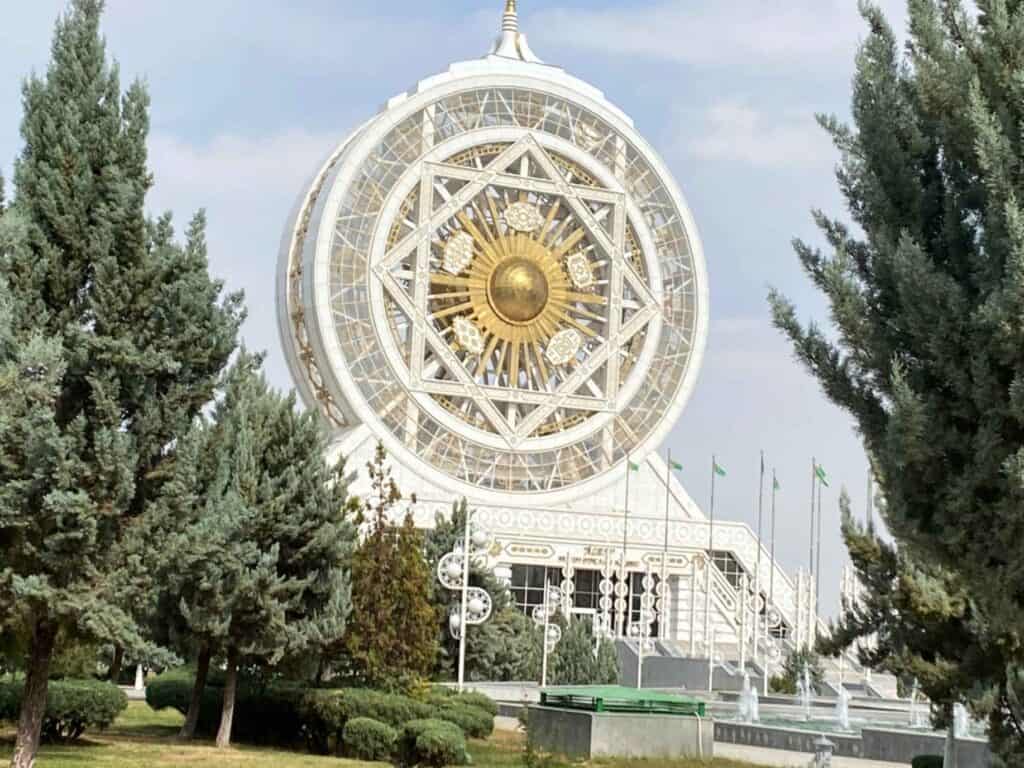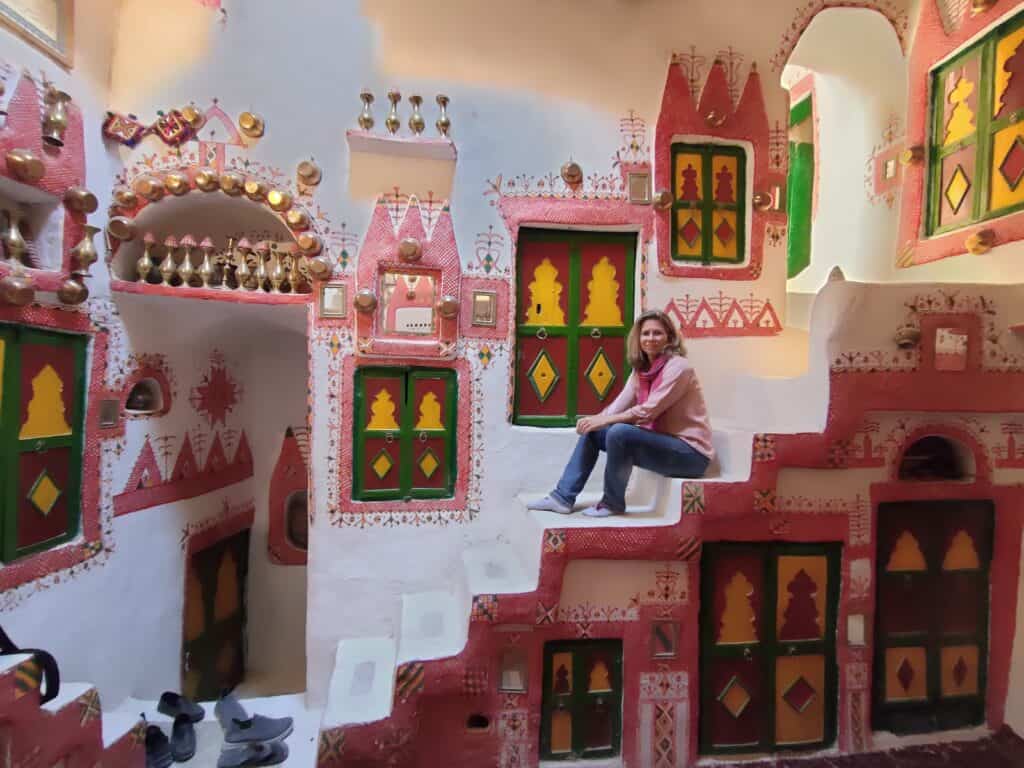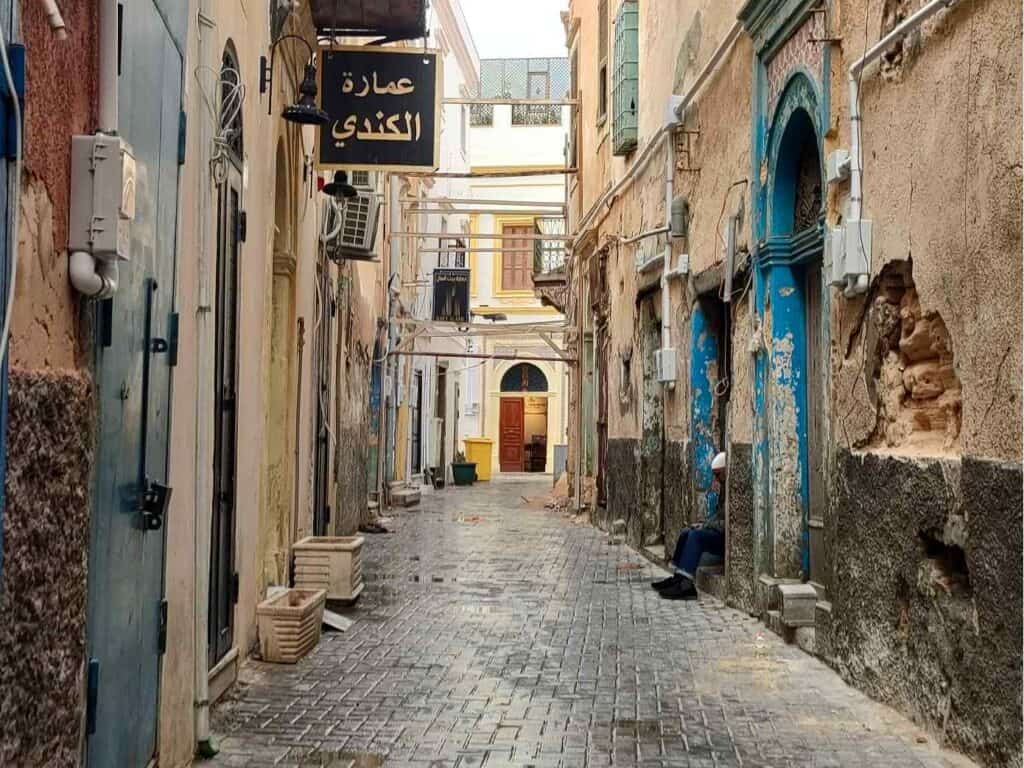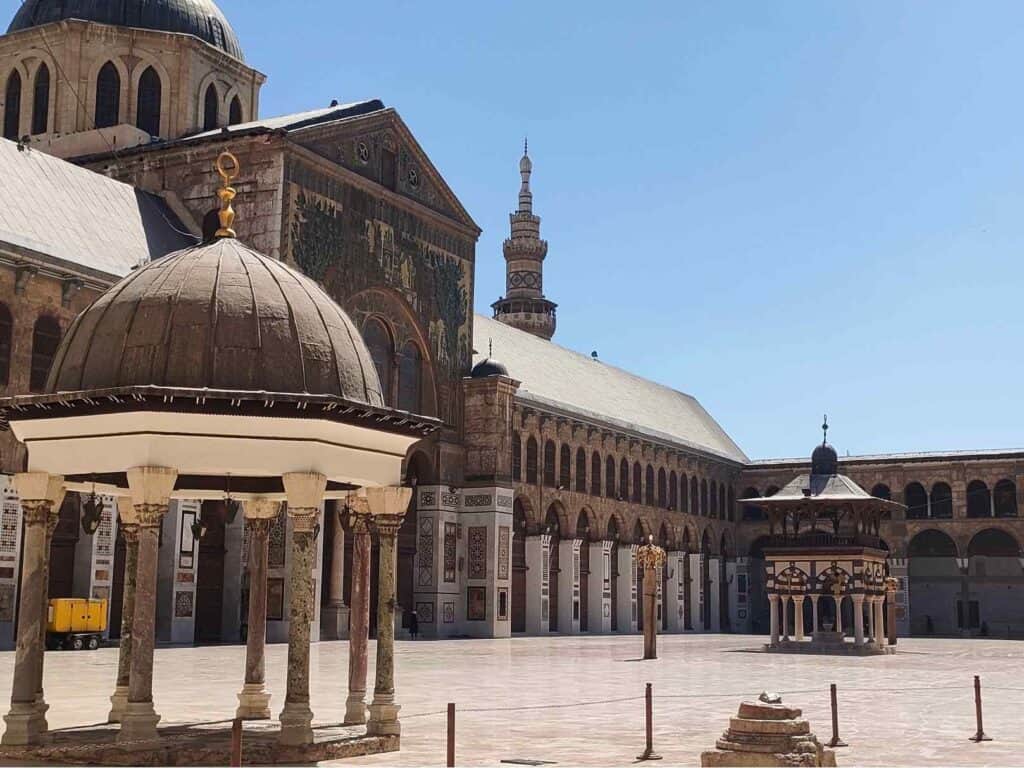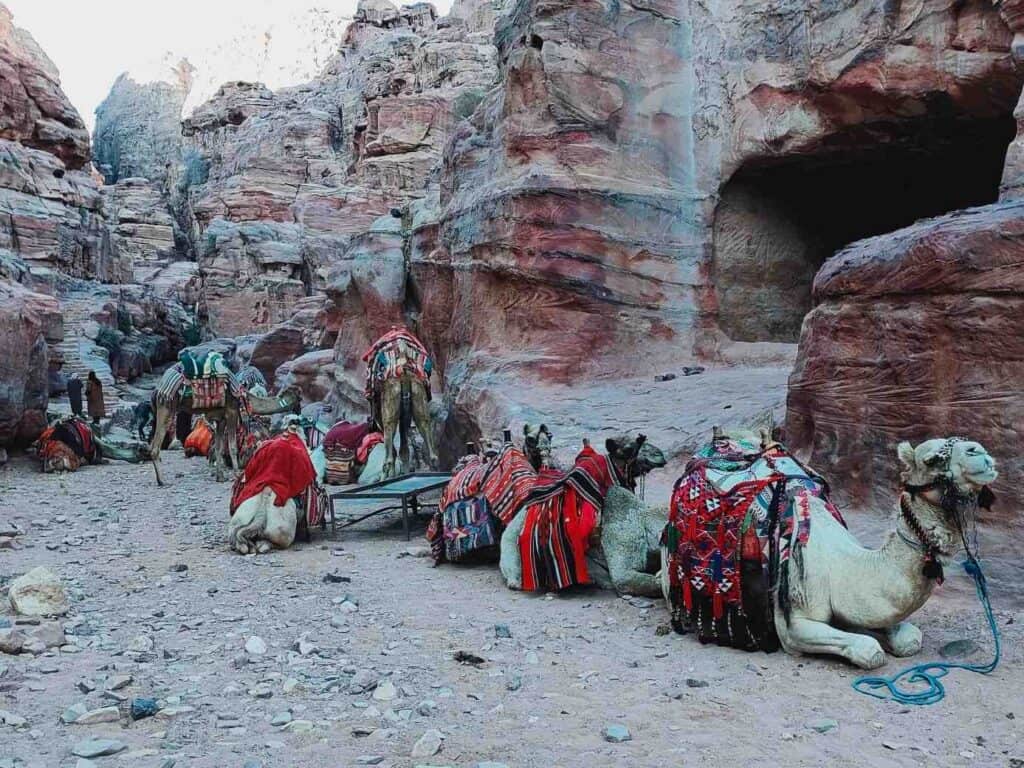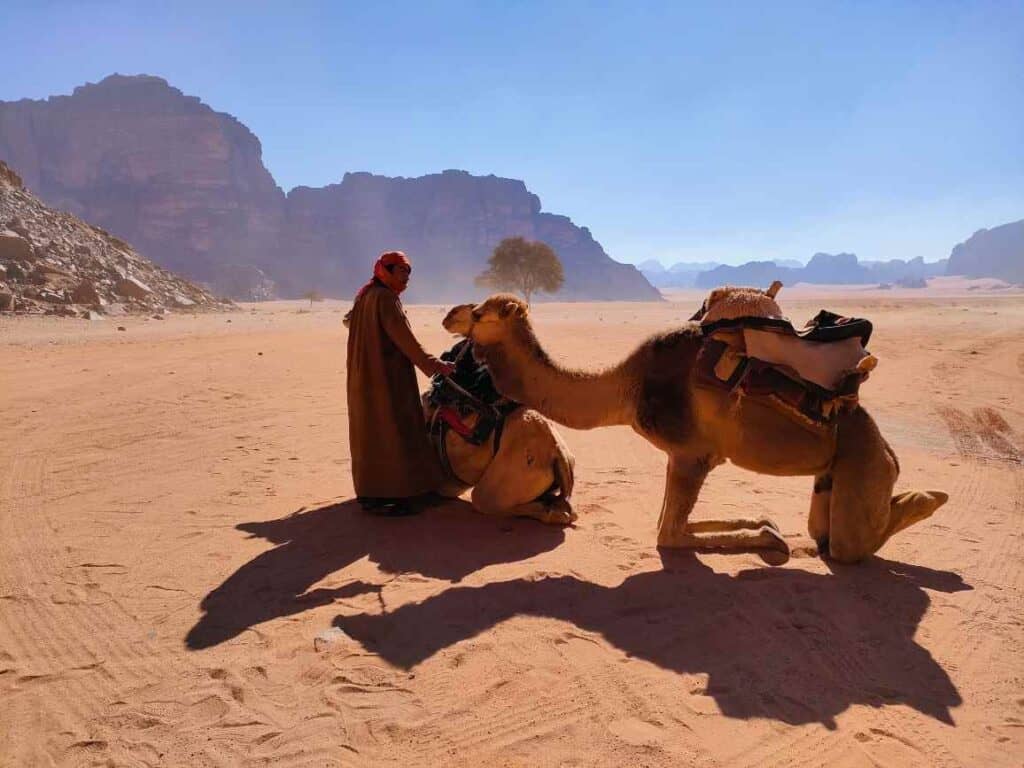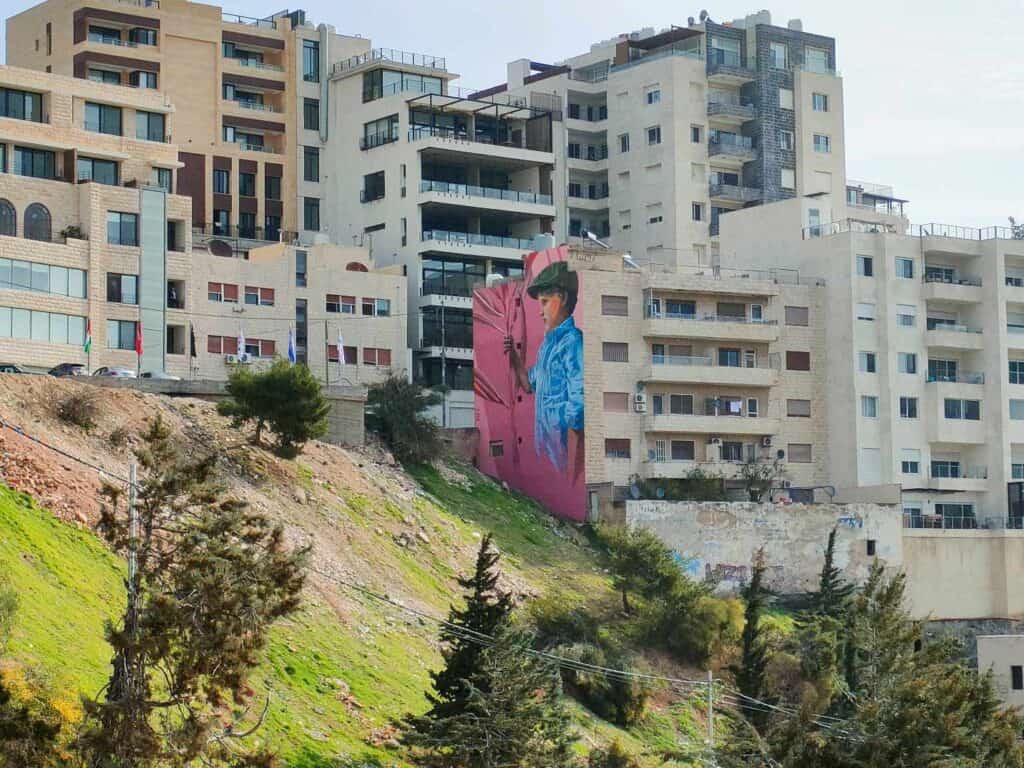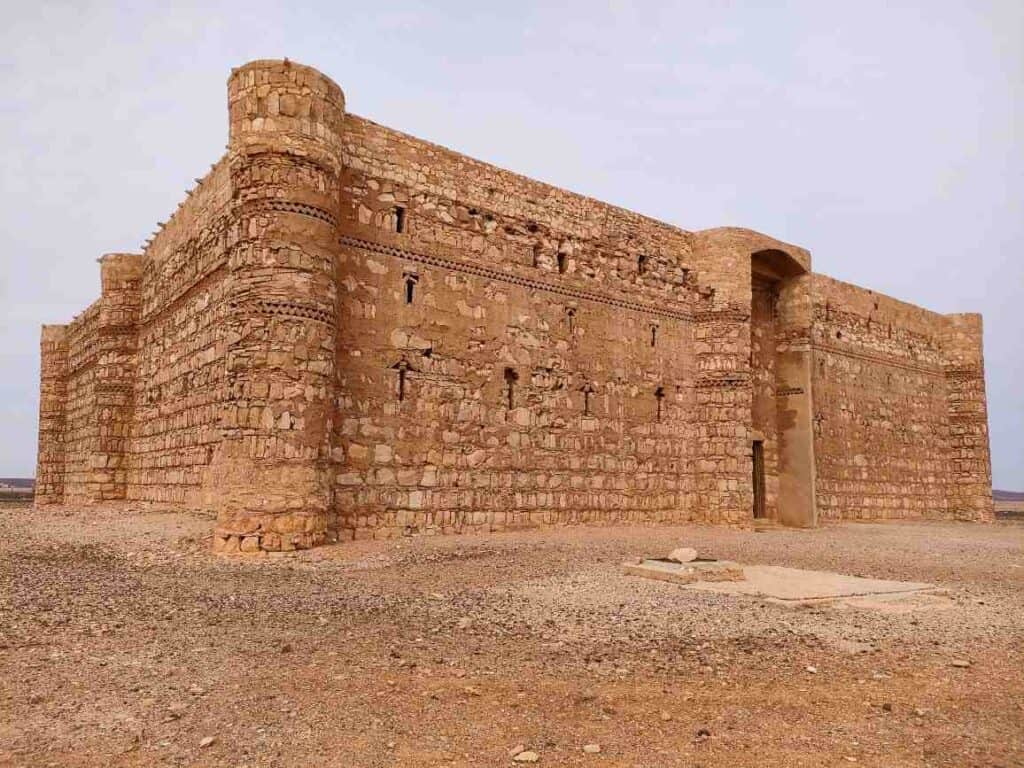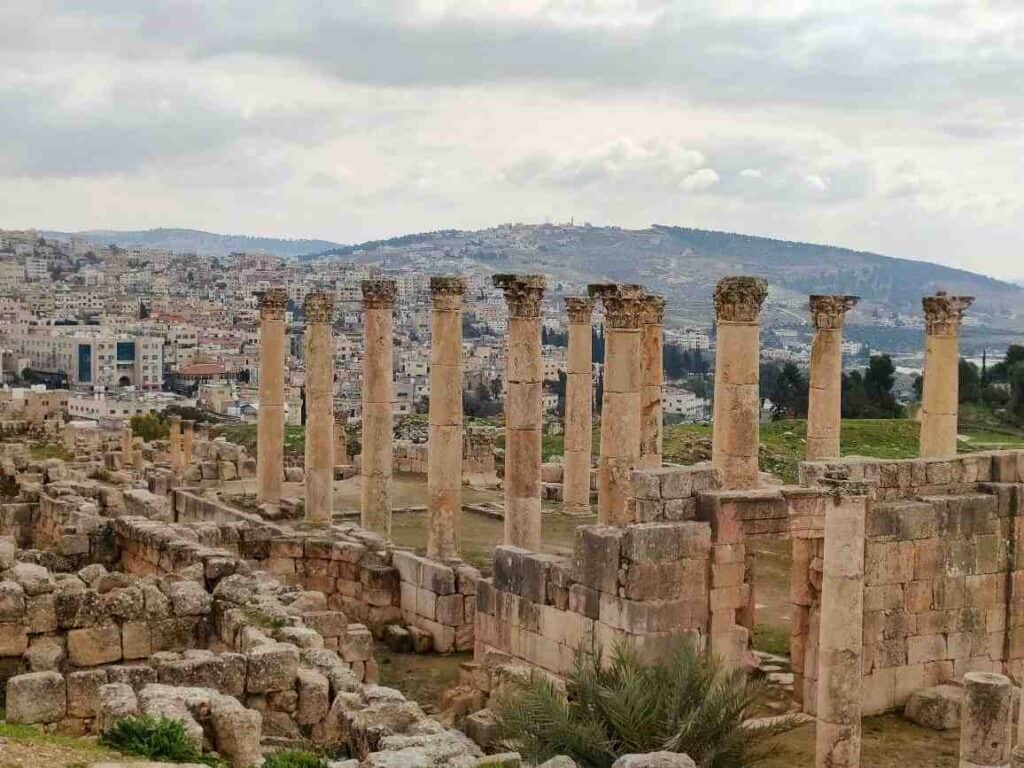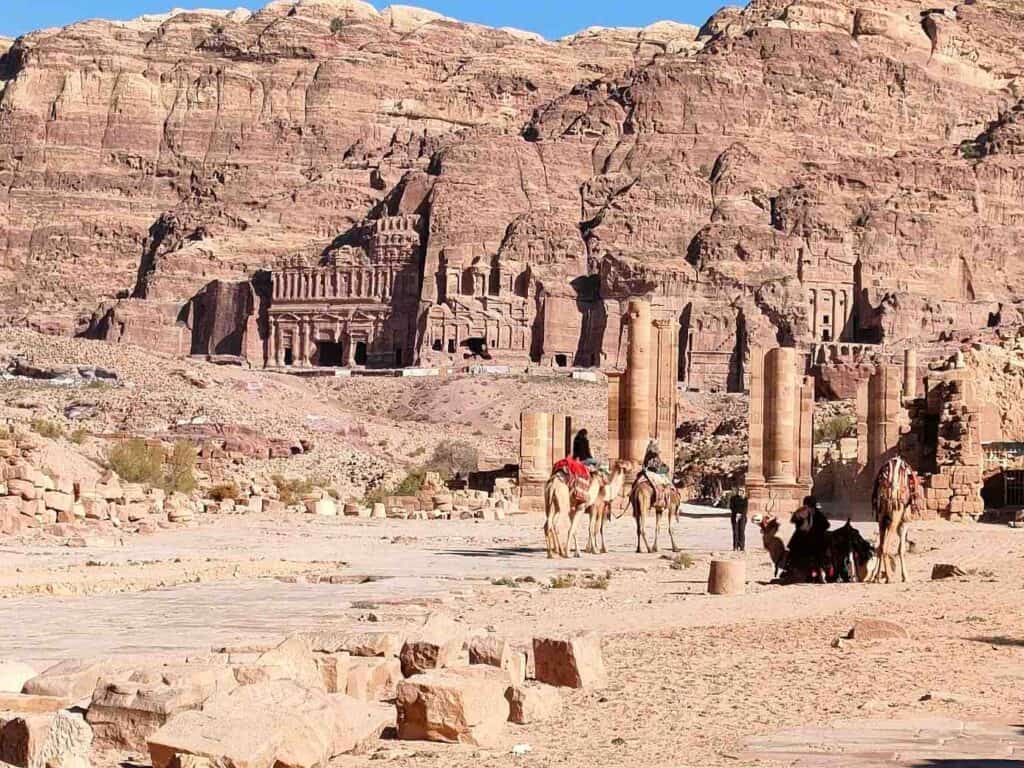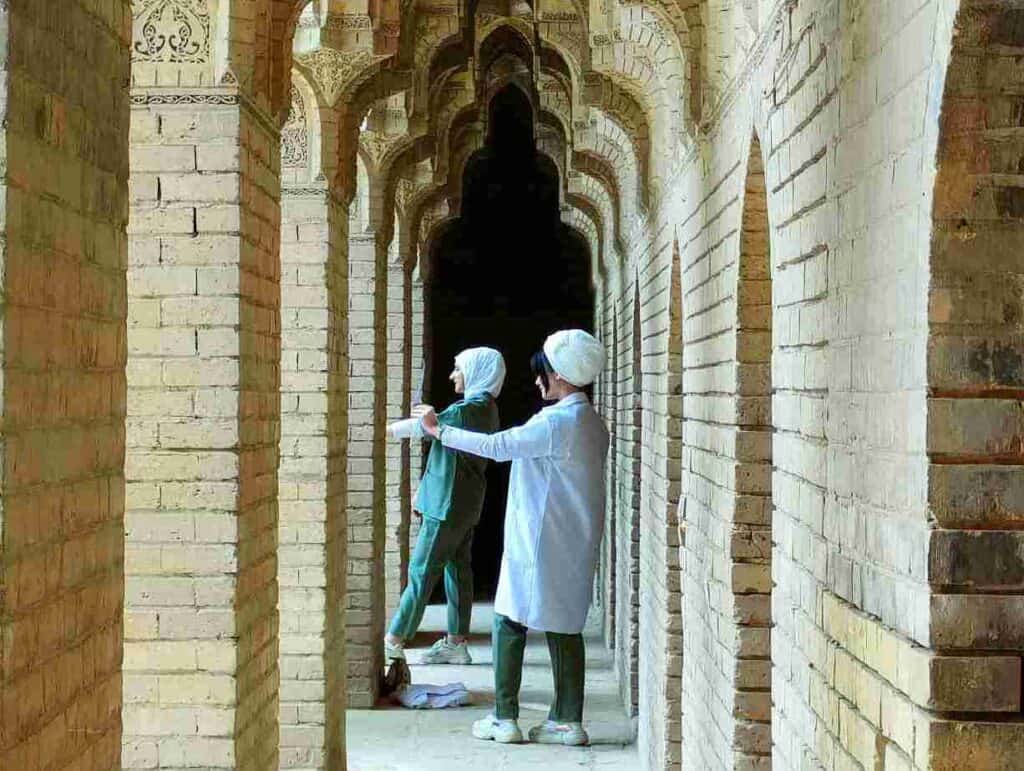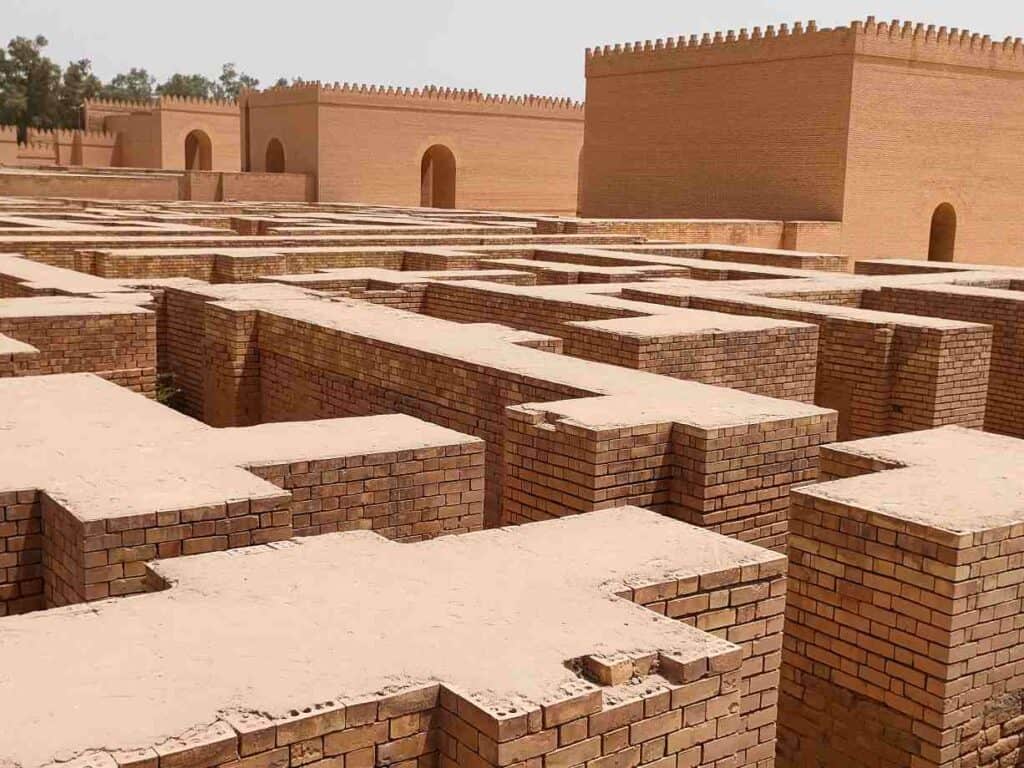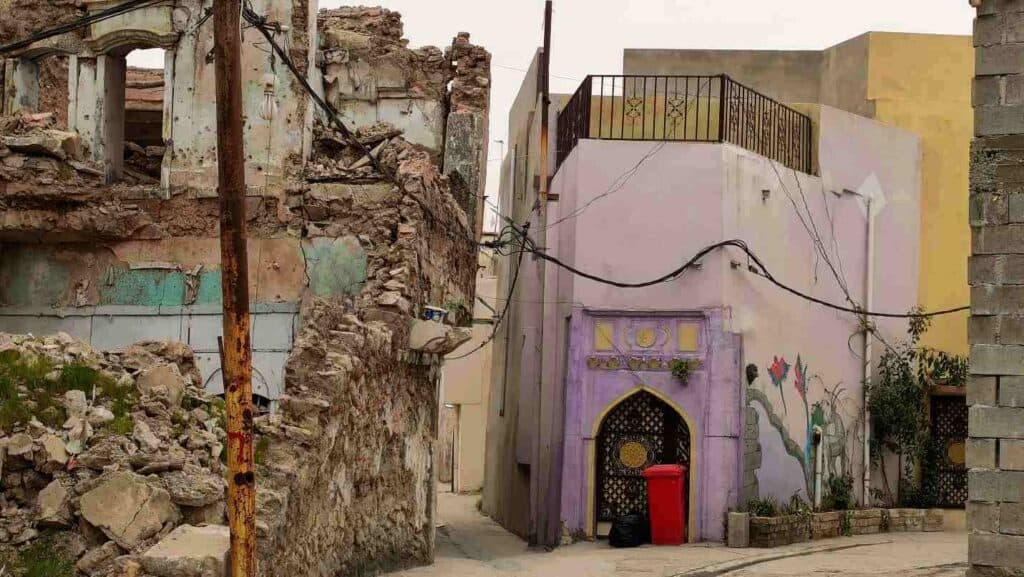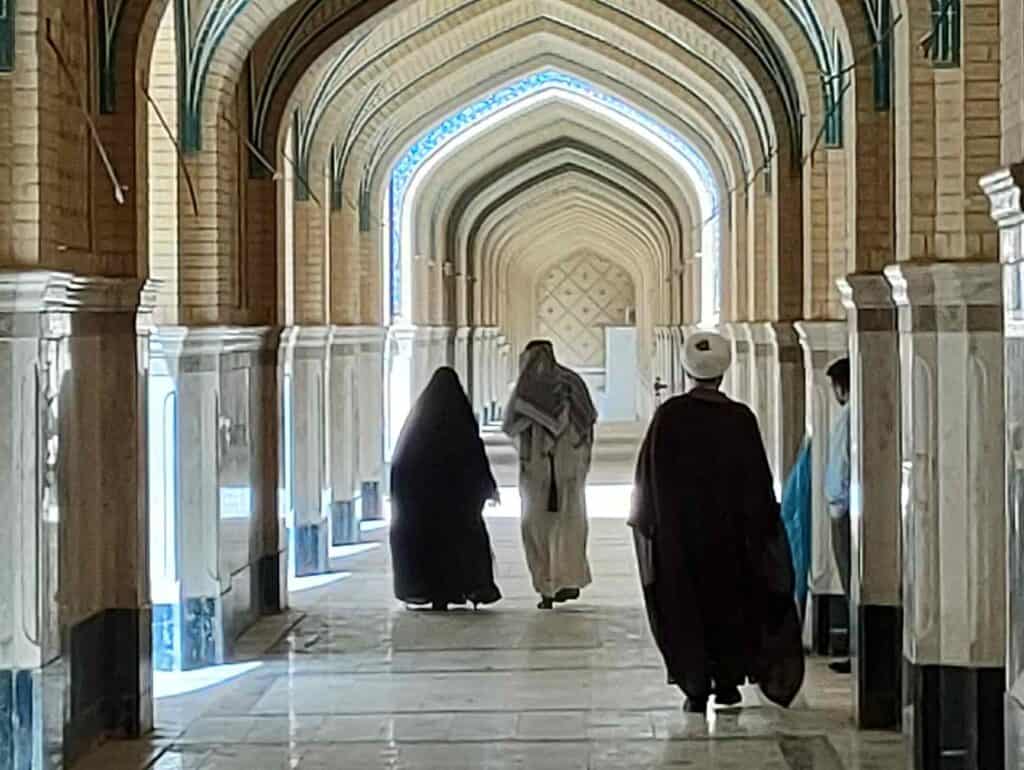Turkmenistan is by far the less-traveled country in Central Asia, with around 14,000 tourists per year, enveloped in complete mystery. It was also one of the last countries to open for tourists in March 2023 after the pandemic. Several questions arise, for example how to get to the country and if it is worth visiting. Here, you will find all the useful information you should know before planning a trip to Turkmenistan, including how to get a visa and essentials about Turkmen history, culture, and customs.
- How to dress in Turkmenistan
- SIM card
- Currency
- How to travel to Turkmenistan
- How to travel around Turkmenistan
- The best time to visit Turkmenistan
- How to get a visa to Turkmenistan (tourist and transit visa)
- Local tour companies in Turkmenistan
- Language
- Prices
- Accommodation
- Opening hours
- Rules of daily life in Turkmenistan
- Food
- Turkmen carpets
- People
- Brief history of Turkmenistan
- Akhal Teke horses
- Posts about the Middle East
The best things to do in Turkmenistan
How to dress in Turkmenistan
Turkmenistan is a Muslim country, so you should dress up modestly. Men should not wear shorts; women should cover their legs and shoulders.
SIM card
You can buy a local SIM card in a shop in downtown Ashgabat, but not at the airport. It costs approximately 30 USD. Since you are most probably part of a tour, it is not especially necessary, and hotels usually provide internet access (in 4-star hotels for sure). However, several pages and social media (Facebook, Viber, Instagram) are blocked. You can send messages with WhatsApp but cannot make a call or download voice messages or videos. Your email service will also probably not work. However, like in Iran, you can download a VPN (Secure VPN worked for me) and avoid all those restrictions.
Here, you can check out all my posts about Iran
Currency
The official currency of Turkmenistan is the manat. 1 USD~19 manat. Your tour guide will help you with money exchange. Local tour companies require payments in USD, and the visa and other fees at the border are to be paid in USD!
International cards are rarely accepted, so bring enough cash with you.
How to travel to Turkmenistan
International flights
The national Turkmenistan Airlines has direct international flights from Frankfurt, Milan, London Gatwick, Dubai, Abu Dhabi, Beijing, New Delhi, Kuala Lumpur, Moscow, Jeddah, Bangkok, Istanbul, and Ho Chi Minh City. However, you cannot book Turkmenistan Airlines’ international routes online, but you need to contact their local office.
Via land
You can enter Turkmenistan from Iran, Uzbekistan, and Kazakhstan.
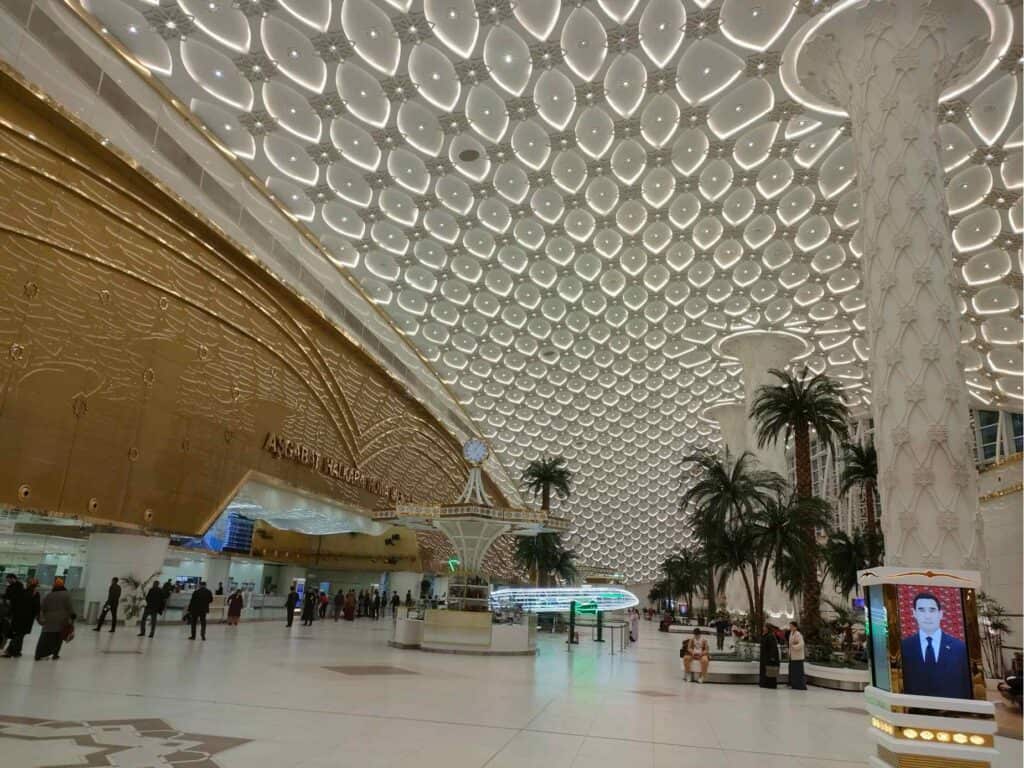
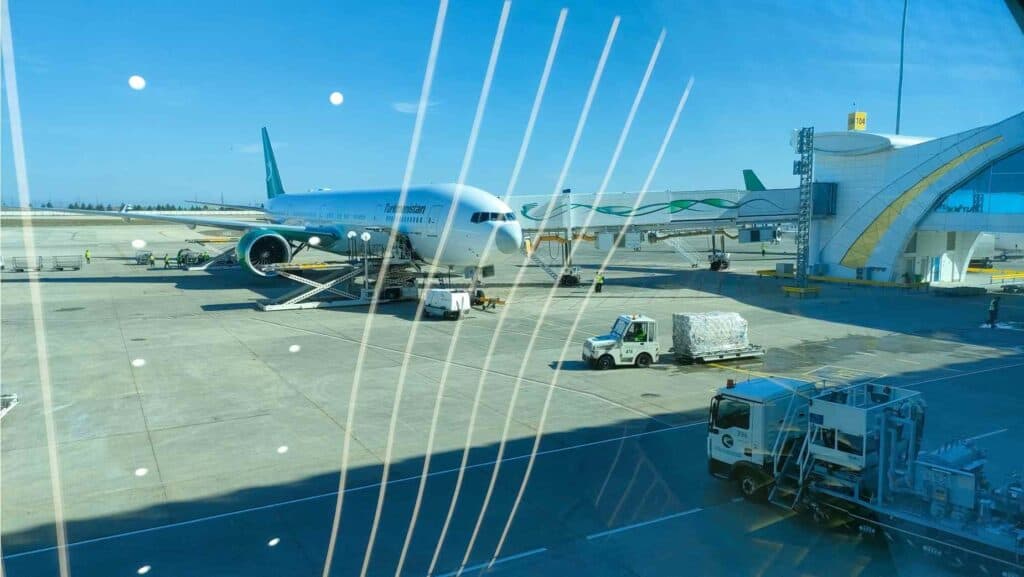
How to travel around Turkmenistan
Domestic flights
Due to the long distances, you cannot avoid taking a domestic flight, which costs 70-80 USD. The domestic terminal is even more spectacular than the international.
Ashgabat, the capital, is well connected to every major city: Turkmenbashy, Dashgouz, Mary, Türkmenabat, and Kerki. However, if you want to fly between other cities, you have to plan your program carefully as there are sometimes one or two flights a week.
Railway
Most locals fly between the cities as the government heavily subsidizes it. However, the railway is another option. There is a train to Dashgouz, Mary, Turkmenbashi, and Turkmenabat.
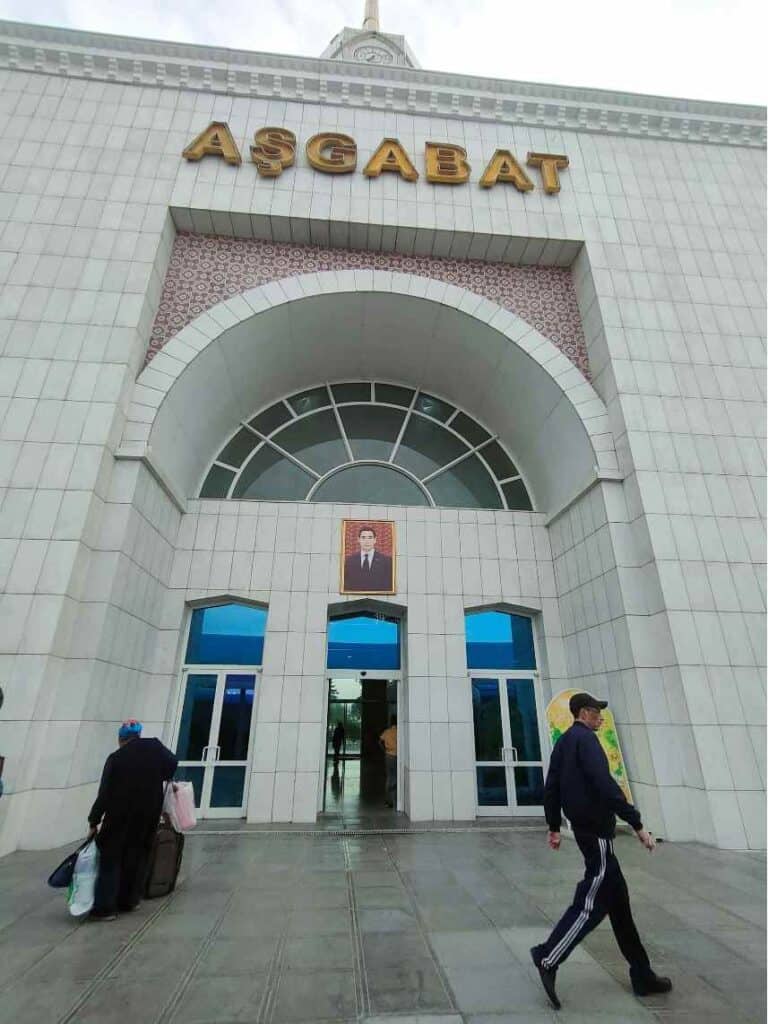
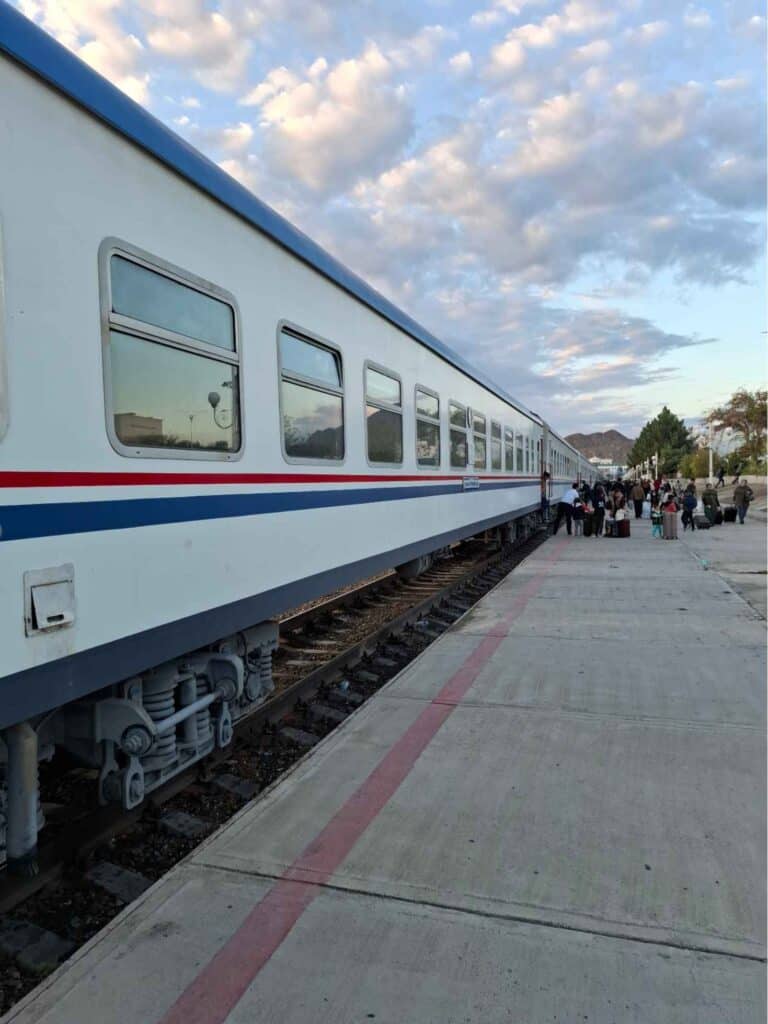
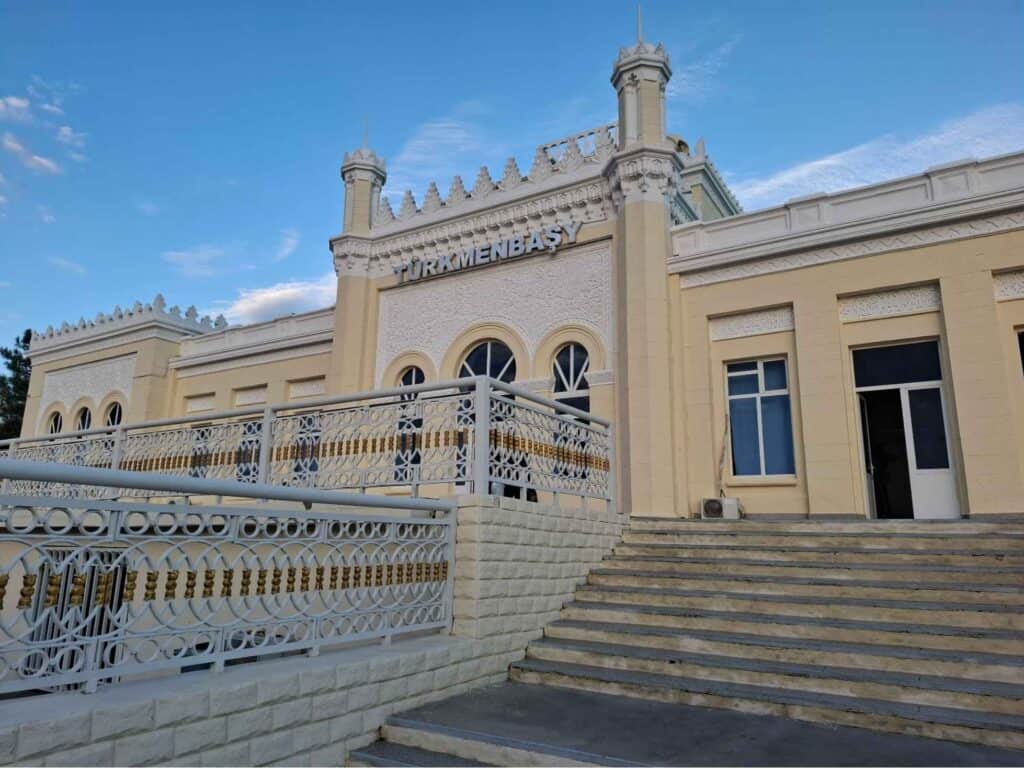
Rail service in Turkmenistan began as part of Imperial Russia’s Trans-Caspian Railway, then of the Central Asian Railway. The Russians started laying rails from the Caspian coast east through Abadan, Ashgabat, Tejen, and Merv. From there, they headed north to Samarkand (in Uzbekistan) and beyond in all Stans.
Trains are simple but not bad. You get a mattress, a pillow, and a blanket on the overnight train. Still, I would suggest it for those who don’t mind the lack of comfort for the sake of adventure.
The best places to visit in Turkmenistan
Buses
Buses are less common to use between the cities but exist. Here you find the schedule of local flights; however, don’t rely completely on that. Some may not be available for foreigners, or it can change. It still gives you an idea about the connections between the main cities.
https://turkmenistanairlines.tm/en/services/show/napravlenie-i-raspisanie-reysov
The best time to visit Turkmenistan
Since Turkmenistan is the hottest of all Central Asian countries, but the temperature is freezing during winter, you should know when is the best to visit Turkmenistan. The best time to visit is autumn and spring, specifically from March to early June and the end of September- mid-November. Try to avoid the hottest period of July and August and the coldest period of December and January.
Spring is especially a good time when the Kopet Dag Mountains are covered in red poppies and tulips, and the temperature is pleasant. Autumn is the time for the cotton harvest.
Remember that they usually refuse to issue visas around the annual celebration of independence (27th October).
It is, however, a good idea to make a trip to Turkmenistan during Nowruz, the Persian New Year (21st March), or the day of Horse (last Sunday of April).
How to get a visa to Turkmenistan (tourist and transit visa)
Turkmenistan is said to be one of the hardest countries to get into. You have two options: to get a tourist or a transit visa.
1. Tourist visa to Turkmenistan
It is not hard to get it; it just takes time (3-4 weeks on average), so you cannot plan a last-minute trip to Turkmenistan. You can only get a tourist visa if you participate in an organized tour with a local company that doesn’t make it cheap. However, in this case, everything goes smoothly; you don’t even need to go to the embassy. The local company will apply for the visa on your behalf and, once approved, provide you with the letter of invitation with which you can get your visa upon arrival at the airport or any land border, depending on your itinerary.
Turkmenistan land borders: Farab (Bukhara, Uzbekistan), Shavat (Khiva, Uzbekistan), Khojeyli (Nukus, Uzbekistan), Gaudan (Bajgiran/Mashhad, Iran), and Bekdash (Aktau, Kazakhstan).
Visas are not issued at the land borders of Serakhs (Iran), Serhetabat (Afghanistan), and Turkmenbashi (the Caspian Sea Port).
How much is the tourist visa?
The visa fee ranges from $55 to $155-200 USD, depending on your nationality, in case of regular procedure.
Other costs upon arrival
Apart from your visa, you must pay a migration duty charge (14 USD) and a PCR test (33 USD). While locals still undergo PCR tests upon arrival, foreigners are only requested to pay the fee.
2. Transit visa
A transit visa is needed for anyone who has a connecting flight from Ashgabat to any final destination, regardless of whether you leave the transit area. You don’t need a letter of invitation for a transit visa and are free to travel alone. However, there is a high refusal rate (around 50%), and you need to apply for this at your embassy. Transit visas are usually given for a minimum of 3 days and a maximum of 7 days (it is rare). On average, they are issued for 5 days. Since the reopening after COVID, it is harder to get a transit visa, though if it is true that Turkmenistan wants to attract more tourists, regulations may be eased.
Usually, travelers come from Iran through Turkmenistan and head to Uzbekistan. It is important that you cannot get a transit visa at Ashgabat airport or other Turkmenistan land borders upon arrival. You need to arrange it in advance.
My posts about Iran may also be useful to you
Other things to know about entering Turkmenistan
All travelers staying in Turkmenistan for more than 3 days must be registered with the migration service. If you are on a tourist visa, your travel company will arrange this.
Local tour companies in Turkmenistan
Stantrips, Ayan Travel, Owadan, Latif and Anur Tours are some of the well-known companies with positive customer reviews. I suggest contacting more for an itinerary and price offer and choosing which offers the best value for money and makes the best impression on you.
Language
Its official language is Turkmen, which is very close to Turkish and Azerbaijani. Due to the Russian influence, it was written in Cyrillic letters, but the first president introduced a Latin script. Russian remains popular, although Turkmen has been the official language since 1992. If you speak Russian, you will get along easily, but younger people in the capital or those who had lived abroad speak very good English.
Prices
Prices in Turkmenistan are cheap, but the constraint of participating in a tour and the dual pricing for accommodation and entrance fees between foreigners and locals will not make your trip cheap in Turkmenistan.
Accommodation
Travelers on tourist visas must stay in selected state-run hotels, excluding the chance to stay in private hotels or homestays.
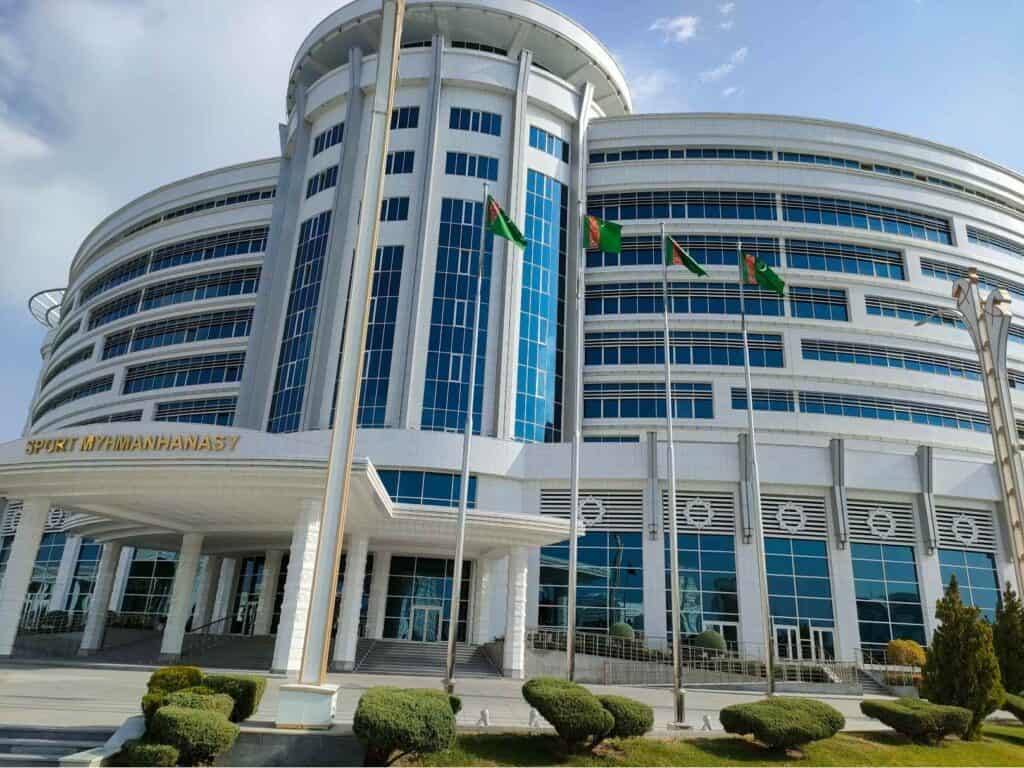
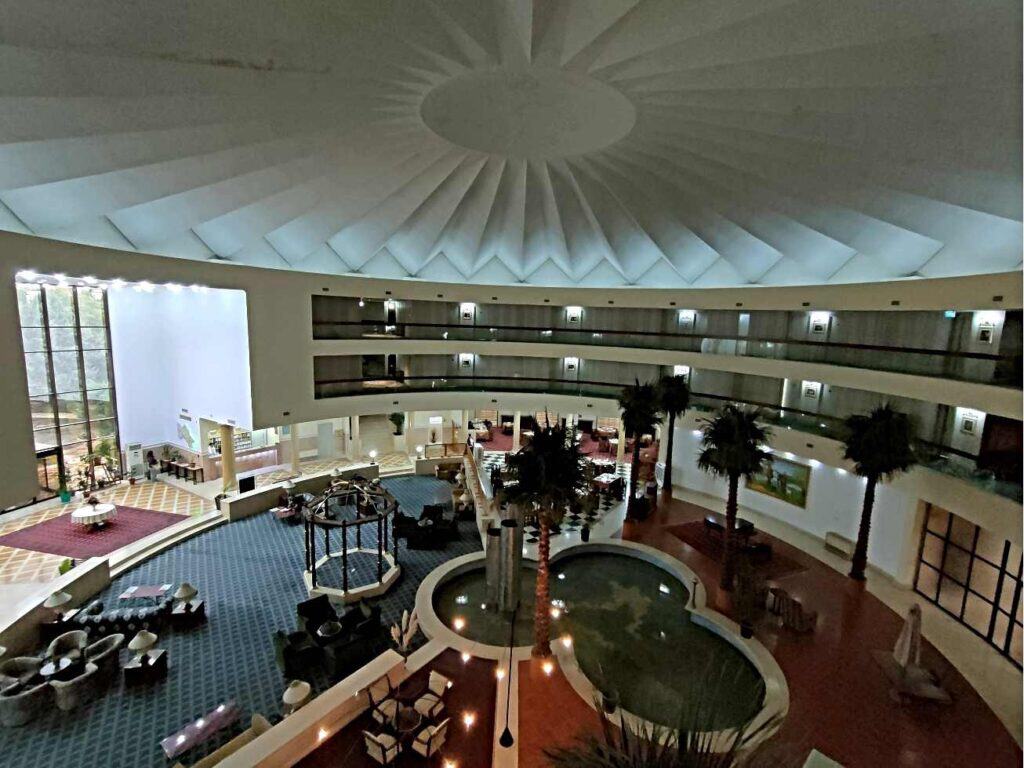
Opening hours
Usually, museums are closed on Sundays, except the National Museum, which is closed on Tuesdays.
Rules of daily life in Turkmenistan
Smoking
In the capital, Ashgabat, smoking is officially banned in all public spaces, including parks, hotels, and restaurants. However, there should be a place for smoking right next to the hotel for smokers, and outside the capital, it is not a problem.
Purchasing carpet
The Turkmen government considers antique carpets national treasures and protects them with export restrictions. If you purchase a Turkmen carpet in the bazaar or a non-government-approved private shop, you need an Export Permission Certificate. The Export Commission has to certify that the carpet is not more than 50 years old and may be exported. It is located at the Carpet Museum. Carpets above a certain size are additionally subject to an export duty, payable at customs on departure.
The alternative is to buy your carpet at one of the state carpet shops. Although such carpets are more expensive, the shop will provide the necessary document (make sure you request the certificate) at no extra charge, and you should not have to pay export duty on larger carpets purchased in state shops.
Photographing
It is not allowed to take photographs of government buildings, at least from close. Also, don’t take photos of the guards that stand in front of political monuments (from a bigger distance, it’s okay) or of people cleaning the roads. Don’t dishonor the president in any way.
Religions
Turkmenistan is a Muslim country where Sunni Muslims make up 89% of the population, and 10% are Eastern Orthodox Christians. According to the Constitution, Turkmenistan is a secular country, but Islam is part of the national heritage and an integral part of Turkmen identity. Though not compulsory, more and more people observe Ramadan, but fewer people go to mosques, and most of them pray at home. The largest and most impressive mosques are in Geoktepe, Gypjak, and the Ertogrul Gazy Mosque in Ashgabat.
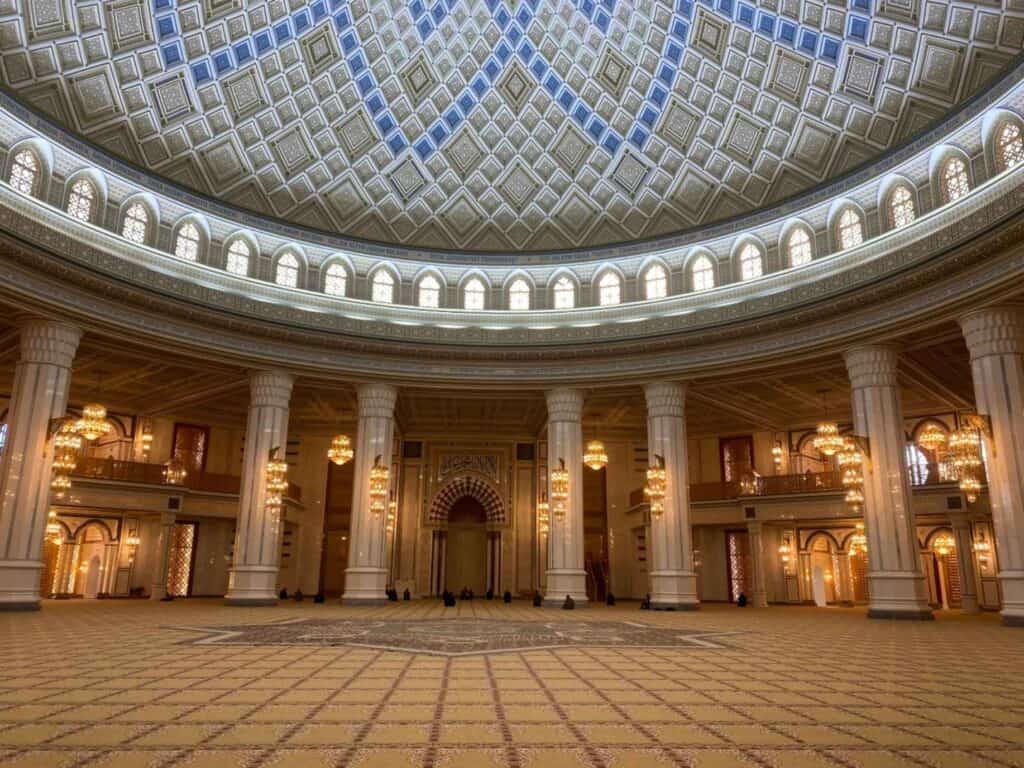
The Islam practiced in Turkmenistan is unique in the way that ancient pre-Islamic customs, beliefs, and Sufi spiritual elements are strongly present. The mixing of Islamic and pre-Islamic customs is omnipresent. Some Turkmen families display verses from the Quran on the porches of their homes as further protection against the evil eye. Quranic texts are also marked inside some female silver jewelry. The simple swings you may see along the road are used to “swing away the sins” during the Kurban Bayram (Eid el-Adha) Muslim festival.
Turkmen often use different talismans and amulets to ward off misfortunes and protect their families. For example, above the doors, you can see dried chili peppers, ram’s horns, or a few twigs of the shrub “yuzaerlik”. Yuzaerlik is also burned and carried around the rooms to prevent illnesses in the house. The dagdan tree, which grows at high altitudes, is also believed to be an efficient tool for keeping the evil eye away. Many Turkmen keep a small piece of dagdan wood in their pockets that they touch occasionally.
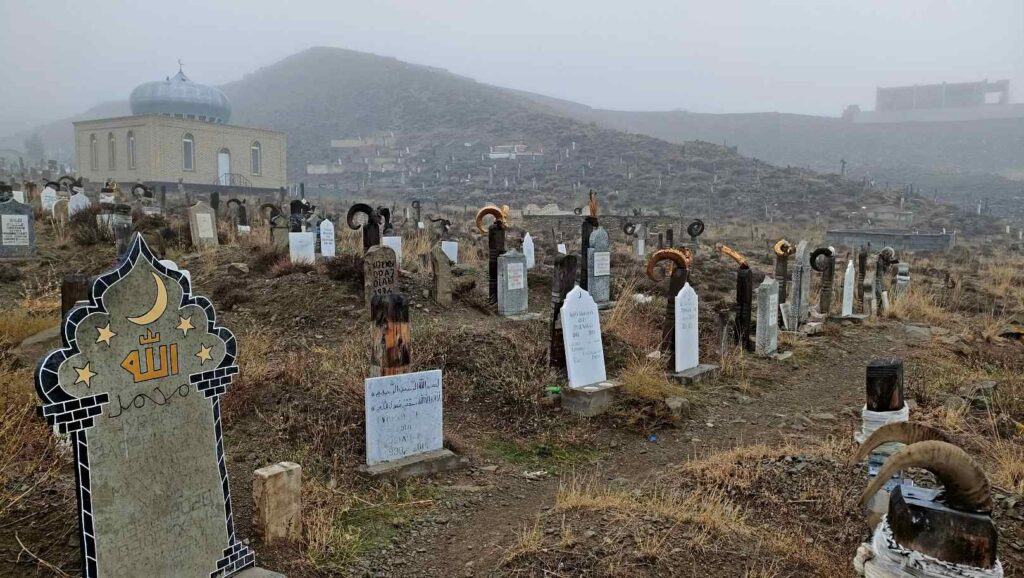
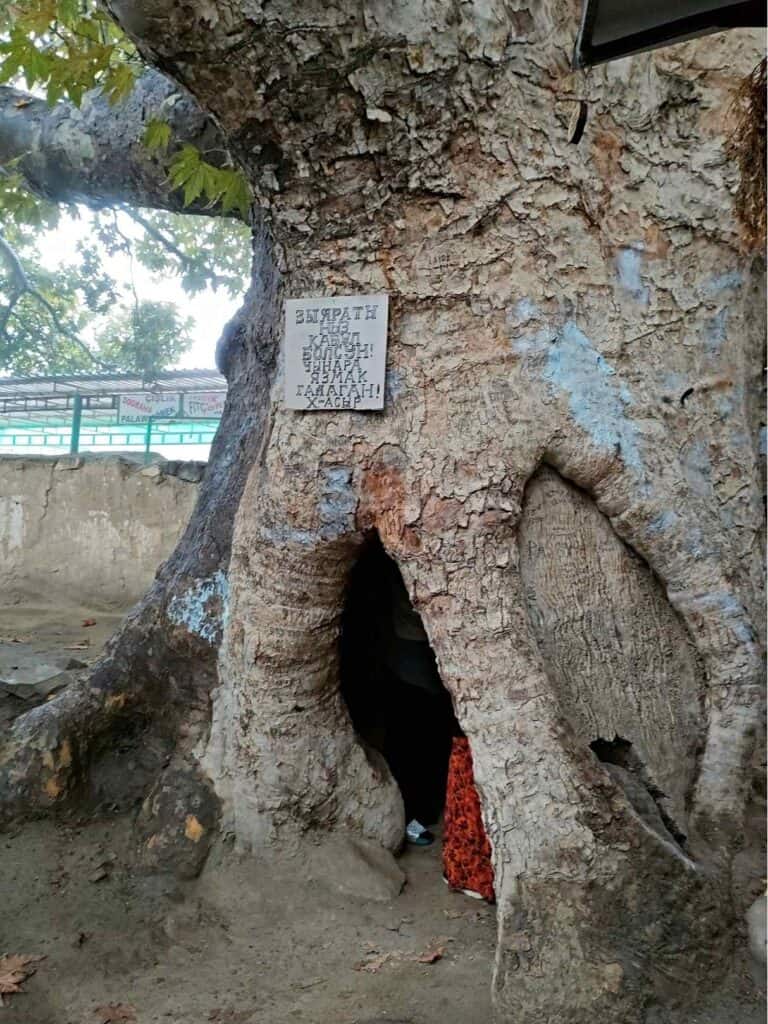
Sufism, the mystical version of Islam, has strong roots in Turkmenistan, and locals often make pilgrimage to the tomb of local Sufi saints and other venerated persons.
There are a wide variety of shrine pilgrimage sites. Some are at the burial site of a well-known Sufi or other respected figure. Some are based around natural objects such as caves or particularly ancient trees, surrounded by legends. Others are the supposed burial sites of major figures of the Islamic world, even if these are known to have been buried elsewhere. Visits to shrine pilgrimage sites involve a complex series of rituals that differ from site to site, but a common feature is circling the tomb or mausoleum three times while repeatedly touching the tomb with both hands and then holding the hands to the face. Pilgrims often tie colorful pieces of cloth to the branches of an ancient tree.
The best places to visit in Turkmenistan
Three is considered a particularly sacred number, and the triangular shape is thus essential in the fight against the forces of evil. Embroidered triangles are often worn around the neck or placed over doorways. People pile up stones of triangular shape at the holy shrines.
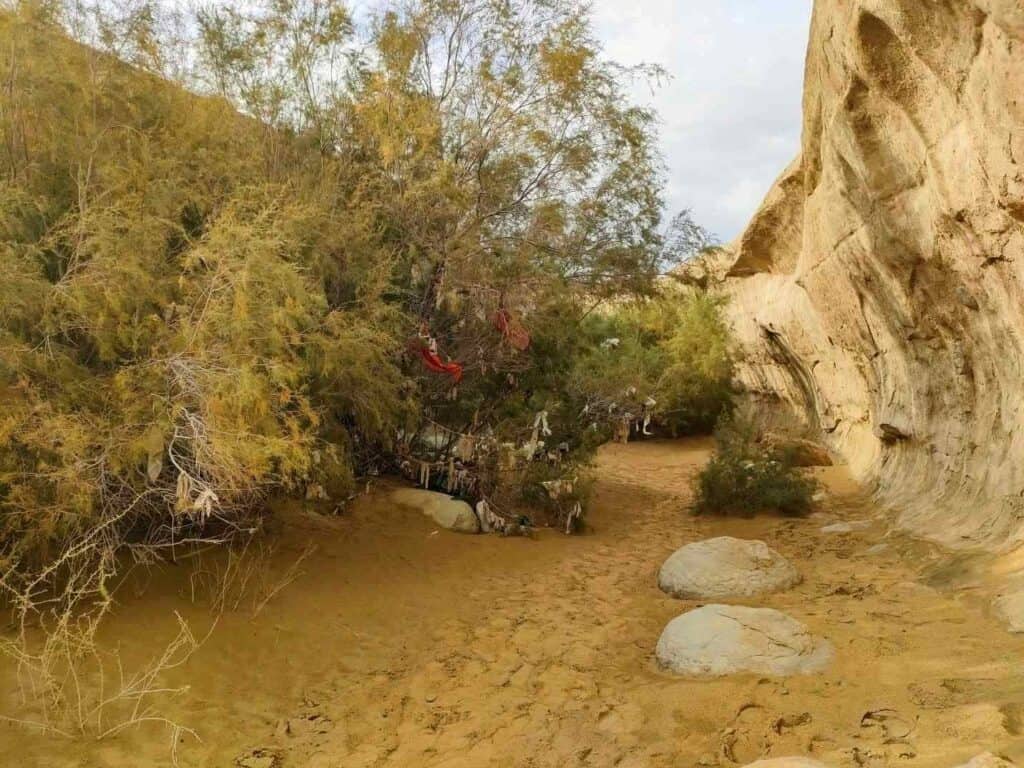
Food
The flat, round-shaped bread (chorek) is the core of Turkmen cuisine and is surrounded by many superstitions. According to the local belief, you should not turn the bread upside down. This is what you are first offered when invited to a Turkmen family. It is best when fresh and warm; afterward, it hardens quickly. They make it in special conical clay ovens (tandoor) that are seen all over the country.
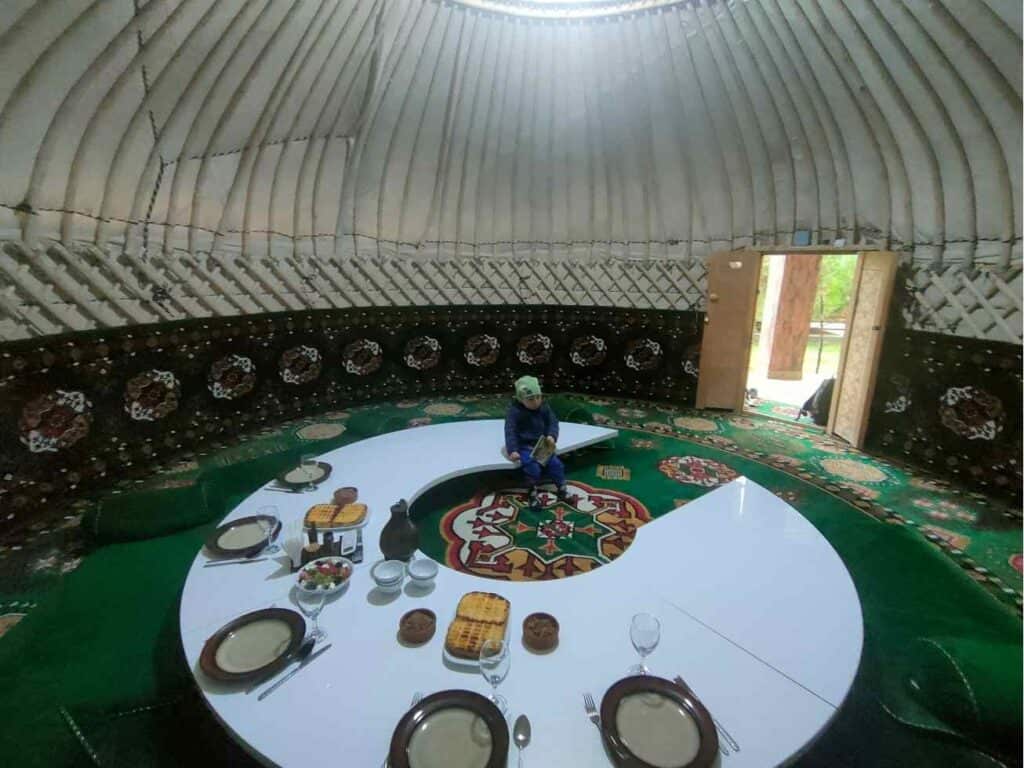
Turkmen like eating soup, so you will find a big choice everywhere. Chorba, usually made with pieces of mutton, potatoes, and whatever vegetables, is a common soup.
Like in other Central Asian countries, Plov (a rice dish incorporating meat (usually chunks of mutton), onion, garlic, and carrot) is a popular dish. Manty, like large ravioli is traditionally filled with minced meat and onion and served with sour cream.
There are grapes and pomegranates in Turkmenistan, but melon is unarguably the most important fruit, with almost 400 types found in the country! One of the popular sweets is chocolate bonbon filled with dried melon. The second Sunday in August is celebrated as Melon Day.
Supermarkets have a stunningly wide choice of food. I was surprised to see at least 20 types of milk, the same with ketchup and other products. Fruit and vegetables also looked fresh. Kamil is a big supermarket chain with shops in every city.
Alcohol
Alcohol is widely available in Turkmenistan: vodka, brandy, and beer (Zip is a local brand) are the most common. At the airport, you can also buy it as a gift for your home, and a bottle costs no more than 60-80 manat (3-4 USD).
Turkmen carpets
Carpets are one of the biggest forms of pride for the Turkmen people. They are mainly red, with each of the five regions in Turkmenistan having its particular pattern. Carpets were the most valuable possessions of Turkmen nomads that covered the walls and floors of their yurts. You are advised not to walk with your shoes on the carpet when entering a yurt.
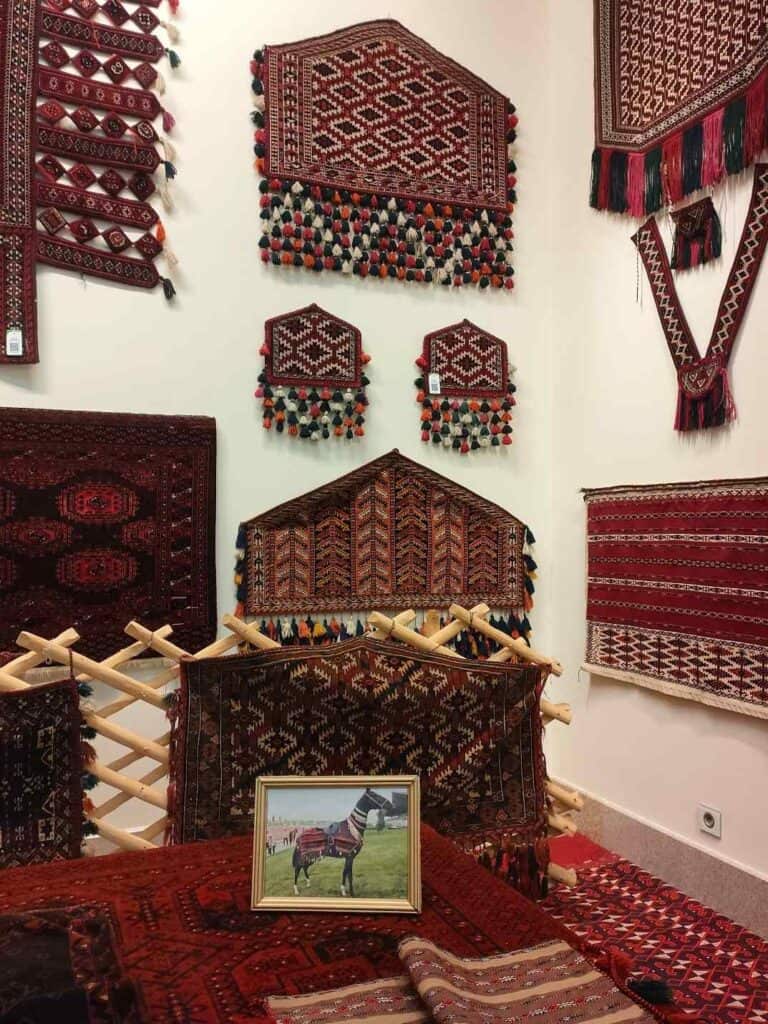
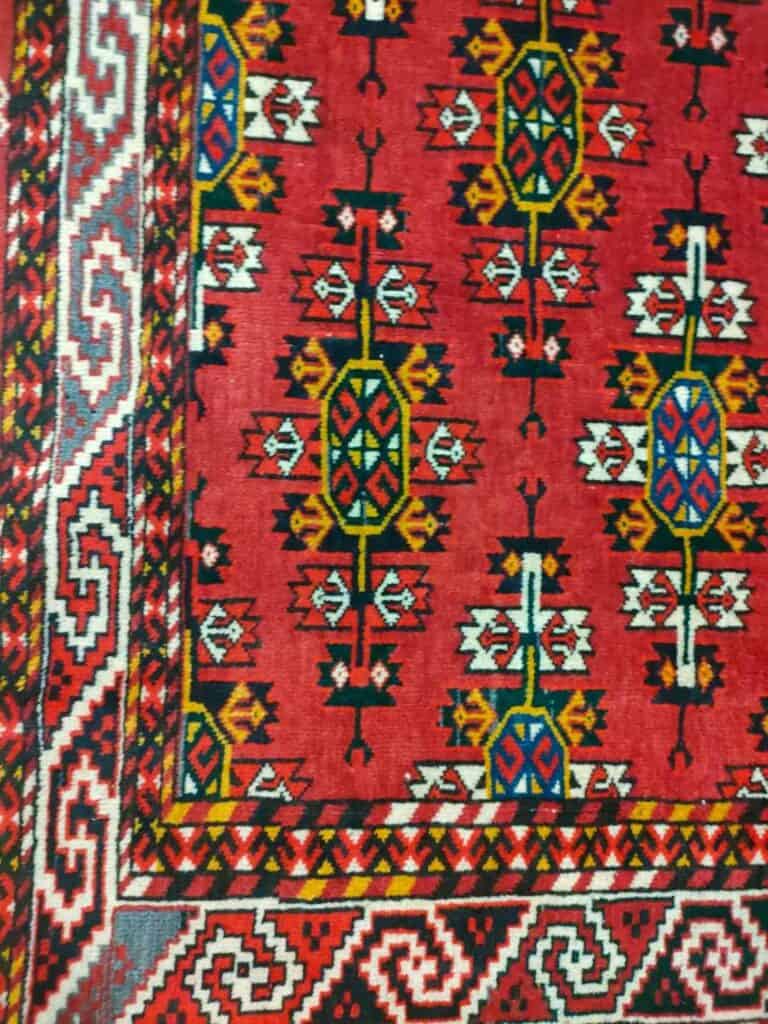
Turkmen carpets had been famous for centuries and were long known as “Bukhara” rugs because they were sold at the city’s bazaars. Marco Polo described them as “the finest and the most beautiful carpets in the world.” After independence, the carpets became national symbols. The Turkmen flag features a “gül” (motive) from each of the country’s five regions. Turkmen celebrate National Carpet Day (the last Sunday in May), and the Turkmen flag displays the unique patterns of each region.
The world’s largest carpet, registered as Guinness World Record, is in the Ashgabat Carpet Museum.
Traditionally, women have woven carpets, and the Turkmen carpet industry is still based firmly around hand weaving. However, most of the wool is colored with synthetic rather than natural dyes.
People
Around 60% of the population are Turkmen, while other minority groups include Uzbeks (16%), Iranians (14%), Russians (4%), and smaller populations of Kazakhs and Tatars. The main towns in the Dashoguz and Lebap regions close to the border have large Uzbek populations.
The Turkmen are a tribal people. The main tribes include the Tekke, based around the Ahal, Tejen, and Merv oases; the Ersari, along the Amu Darya; the Yomud, in the western Balkan Region and Khorezm Oasis; the Goklen, in the far southwest; and the Sarik and Salor, in the southern part of the Merv Oasis and along the Murgab River. Historically, divisions between the tribes have been strong. Differences between the tribes are reflected in styles of dress, carpet designs, dialect, and even personal character.
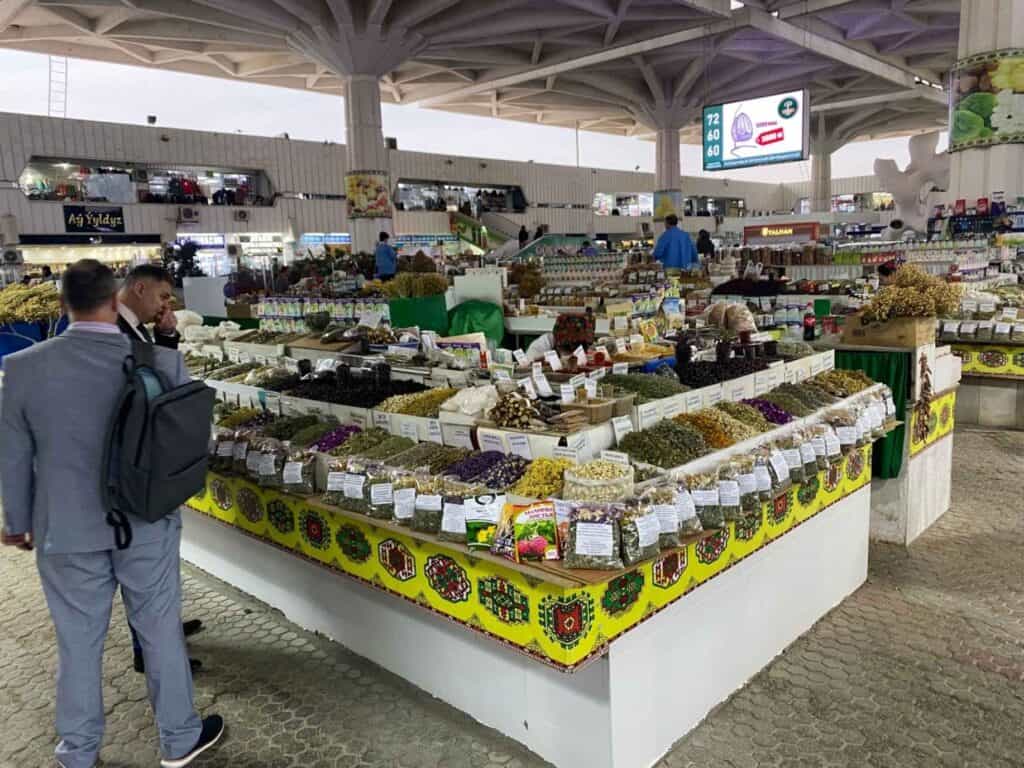
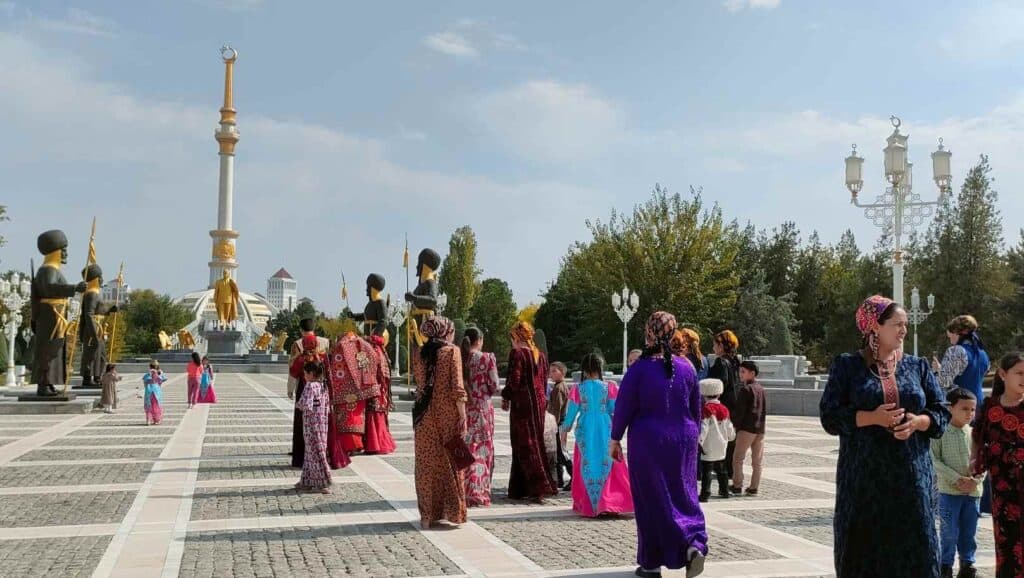
The 18th-century Turkmen poet Magtymguly stressed the need for unity among the Turkmen tribes to efficiently stand up against foreign invasion. Still, the tribal background remains essential in many spheres of life.
People are kind and hospitable to foreigners. The young English-speaking people are happy to approach foreigners, ask about their nationality, and use the chance to practice English. Hospitality and honesty are some of the most important values of the Turkmen people.
Wedding traditions
A wedding is the most important event in a Turkmen’s life, and the celebrations last for days with hundreds or even a thousand people invited. Wedding ceremonies still respect ancient traditions, which differ from region to region. While in the cities young people choose their husband or wife, matchmaking is still very common in the countryside. The wedding date is chosen when it is most favorable based on astrological factors.
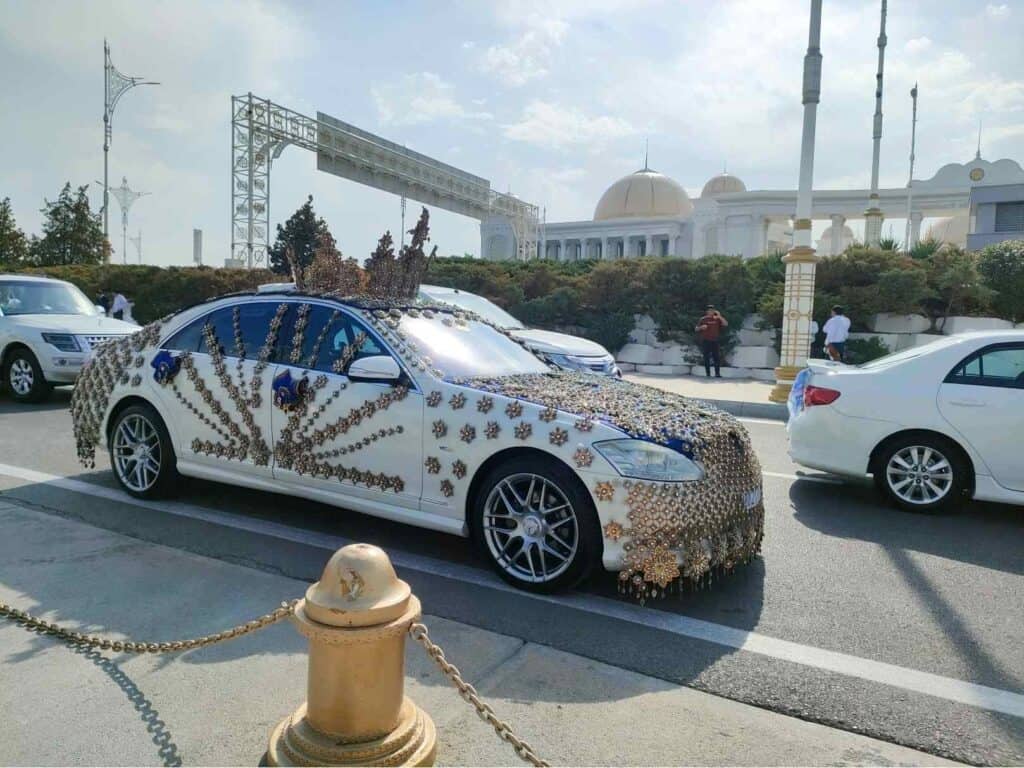
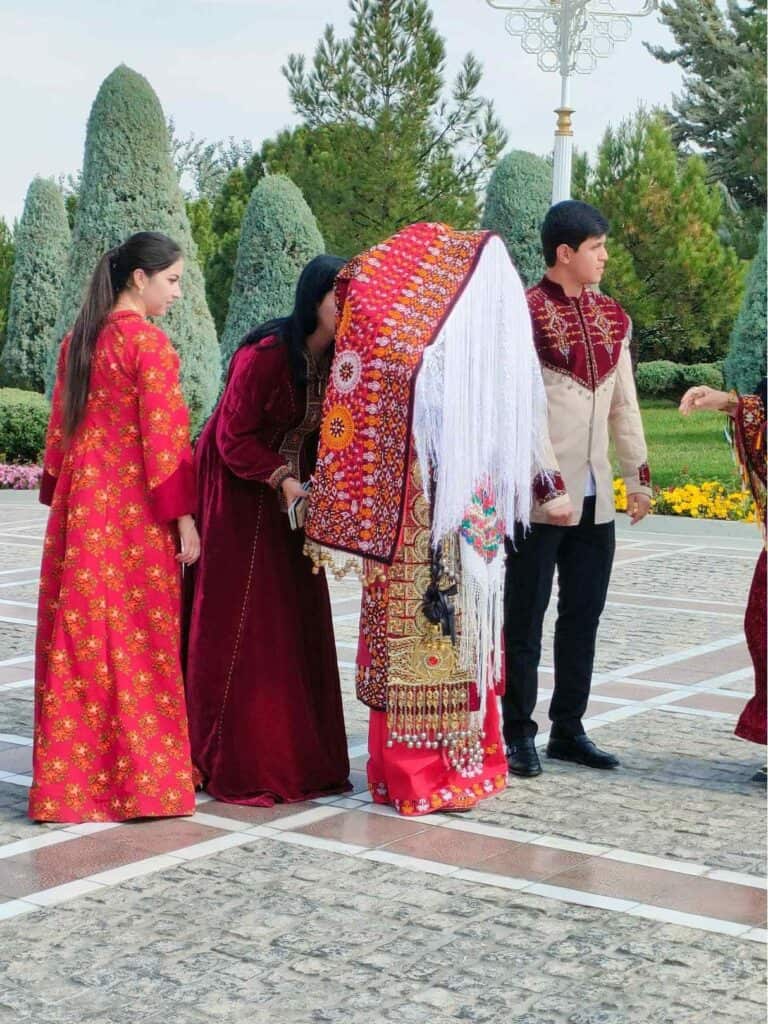
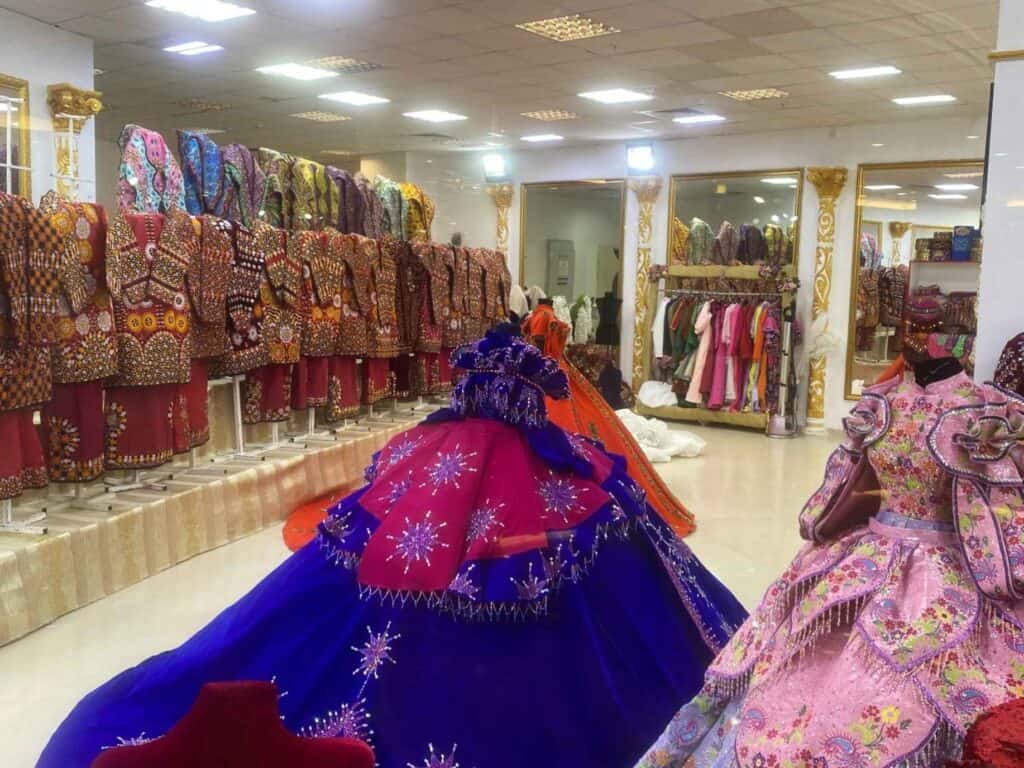
Red color plays an important role, as it is believed to have magical power for protection and good fortune. So, the bride wears a red wedding dress richly decorated with silver and gold-plated jewelry and embroidery to ward off evil spirits. The bride is completely veiled by a cape adorned with amulets for her protection. Her wedding dress, with all the amulets and jewelry, can weigh up to 35kg, so she is often assisted in walking.
Brief history of Turkmenistan
According to the Ruhnama (the Book of Soul written by President Niyazov), the Turkmens originated from Oguz Han, who had six sons, each of whom had four sons of their own. From these 24 boys originated 24 clans, from which all of the Oguz people of the world are descended. While Turkic tribes had started to arrive in this part of Central Asia around the 5th century, historians believe that there was a major westward migration of Oguz tribes from the area of present-day Mongolia in the 10th century. The Oguz people moving into the area at this time were the ancestors of the modern Turkmen. The star of Oghuz Khan is an important symbol of Turkmenistan.
The star of Oghuz Khan appears on many buildings, banknotes, and even on the Turkmenistan state emblem. Oghuz Han is considered as one of the fathers of the Turkic people.
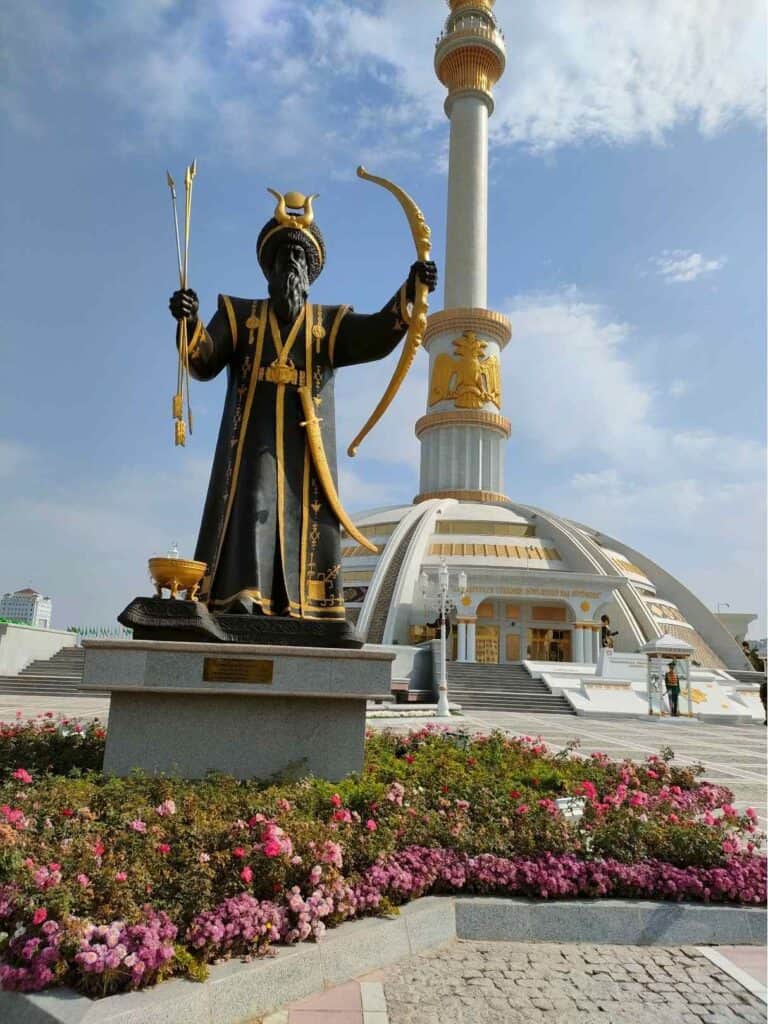
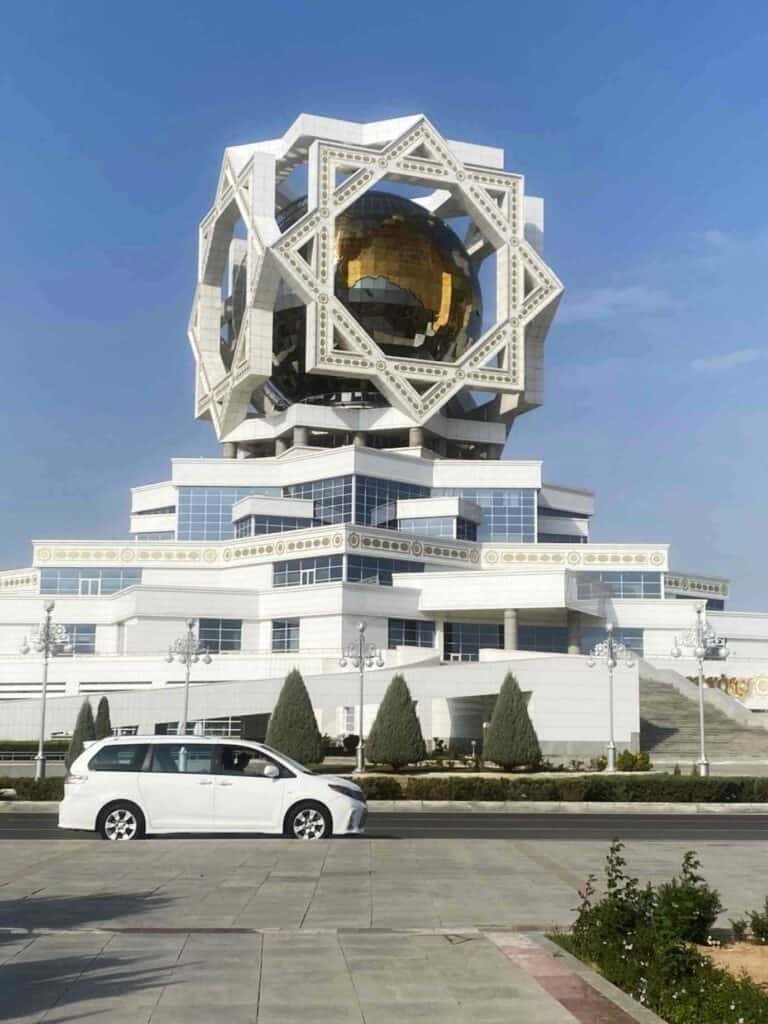
Turkmenistan is the middle of nowhere; it used to be the middle of the world. Missionaries, merchants, diplomats, and adventurers crossed the Karakum on the Silk Road and other trade routes that connected Europe, Persia, India, and China and rested in the great oasis cities of Merv and Konye-Urgench.
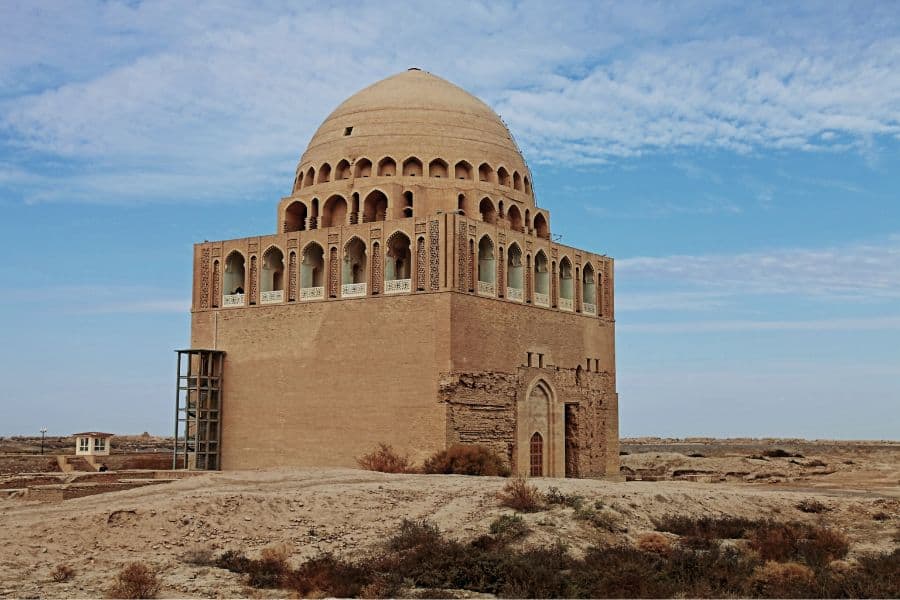
Massive armies swept through the area. It was first invaded by the Persians, and then Alexander the Great’s troops brought Greek language and culture to the region. The Parthians from Persia formed an empire comprising much of modern-day Iran and Turkmenistan, with the capital at Nissa.
The great empires of the Parthians, Seljuks (an Oughuz Turcic dynasty whose empire stretched from Iran to Syria and Anatolia in the 11-12th century), and the Khoresmshahs (a dynasty that ruled in Central Asia and Iran, first as vassals of the Seljuqs and later as independent rulers) flourished and faded.
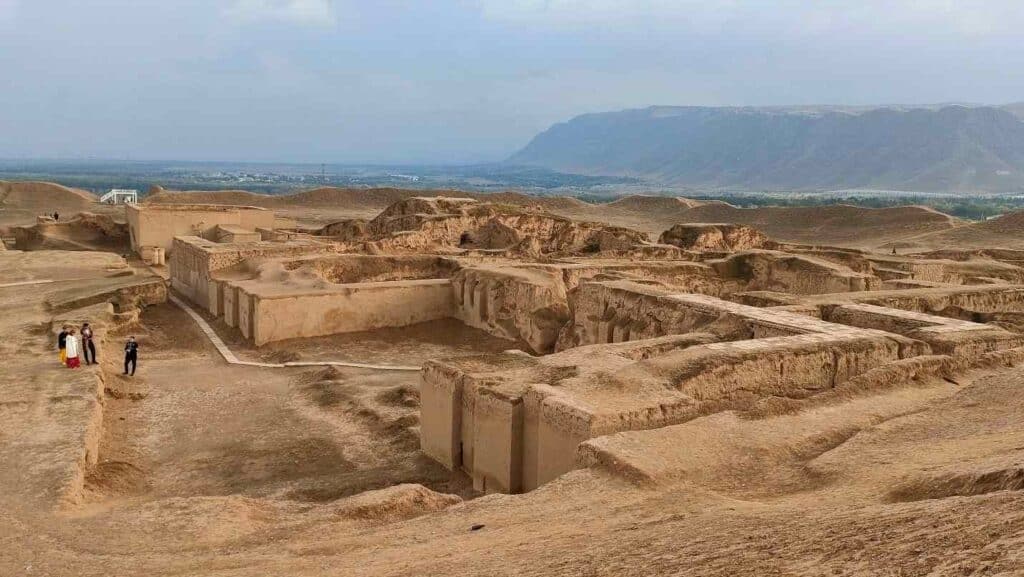
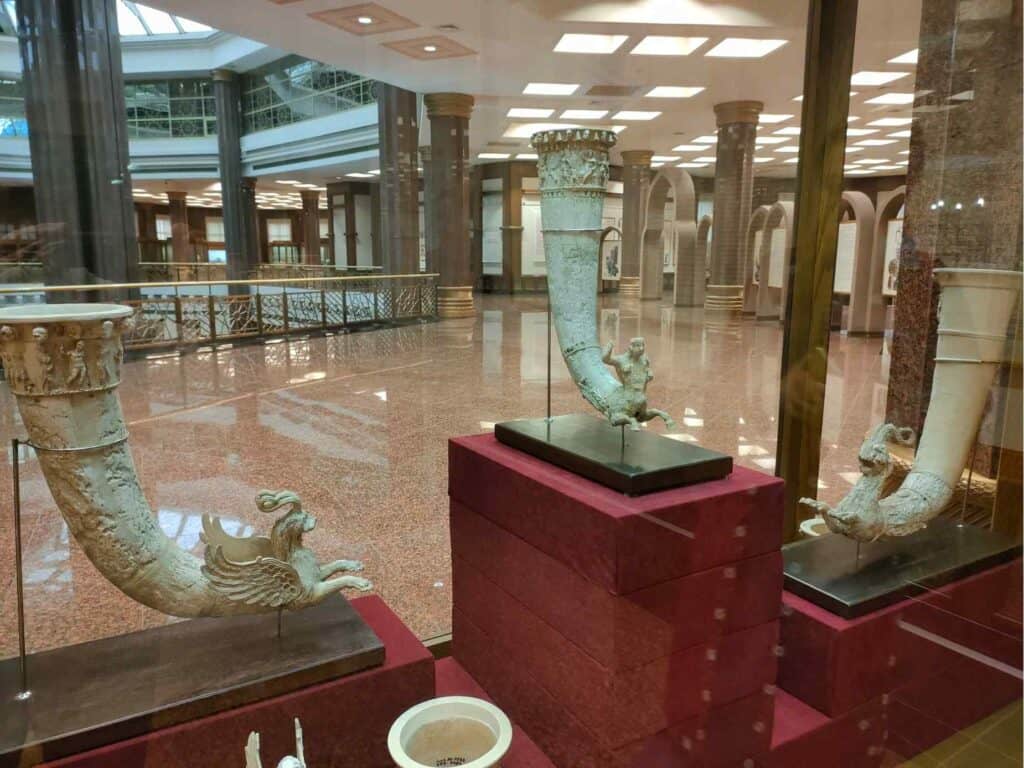
Genghis Khan and his Mongols conquered the land in the 13th century, causing massive destruction. Turkmenistan rarely knew peace; it became the site of a power struggle between Uzbeks, Persians, and the Khans of Bukhara and Khiva city-states (now thanks to the Russians redrawing country borders, in Uzbekistan).
Arab armies brought Islam, while Turkic armies brought nomadic traditions from the northern steppe.
Finally, when travelers and conquerors began their journeys by ship in the 16th century, the overland routes through the heart of Asia became obsolete. Once a great center of science and learning, from that point on, Central Asia began to fall behind the rest of the world.
Russia gradually expanded over Central Asia, and in 1879, it reached Geok Tepe. The Turkmen surprisingly defeated Russian troops, and the battle marked the first major setback of Russian imperial goals in 164 years. However, two years later, they returned under the command of Skobolev, the most feared Tsarist general, and defeated the Turkmen in the same place. By 1895, all of Turkmenistan was controlled by Russia.
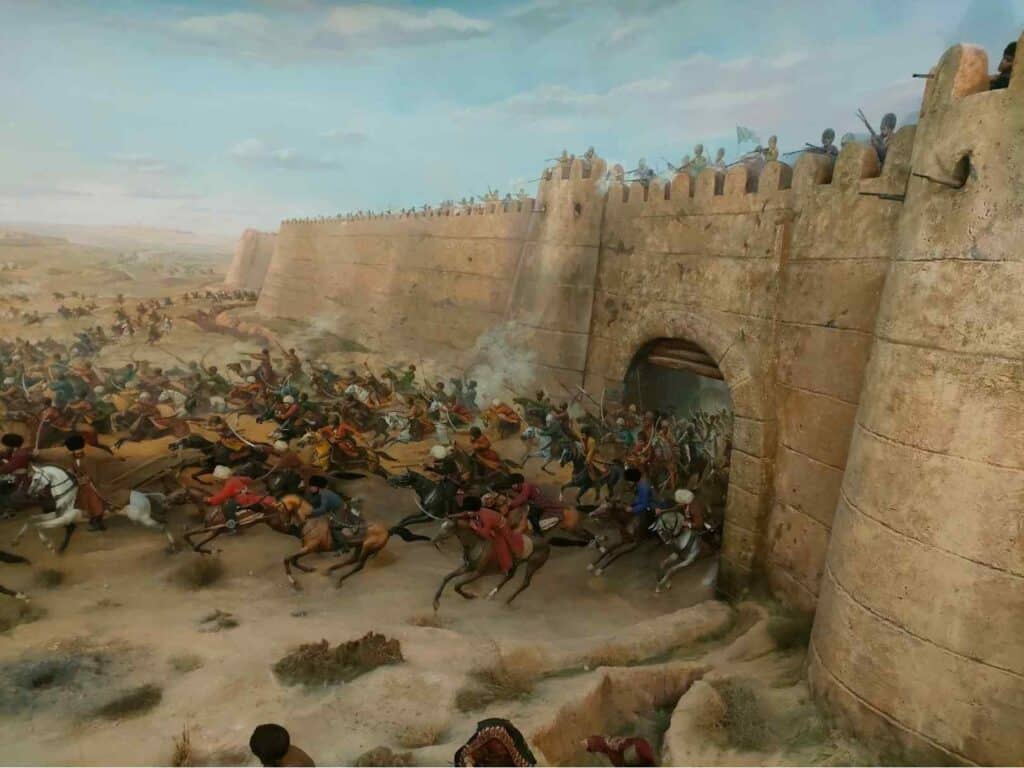
When tsarist Russian troops conquered and colonized Turkmenistan in the 1880s, Turkmen tribes pursued a lifestyle almost unchanged for centuries. The Turkmen lived under Russian rule (first tsarist and then Soviet) for over a century. The Soviets ended the partially nomadic Turkmen way of life, lifting the tribes into modernity. They built cities, factories, schools, and railways; they trained scientists, engineers, and bureaucrats.
Turkmenistan was proclaimed part of the newly formed USSR in 1925 and became an important source of gas, oil, and cotton production. However, it could benefit from its oil and gas wealth only well after independence, when new pipelines were established, ending its dependence on Russia.
In 1991, the Soviet Union collapsed, and Turkmenistan gained independence.
The best places to visit in Turkmenistan
Akhal Teke horses
Turkmens have two passions: horses and carpets. They are at the center of the national heritage. Horses are national treasures, not just animals, but true companions of every Turkmen; unlike the Kazakhs, they don’t eat horse meat.
There is no women’s beauty contest, but for horses, there is! This and the following National Horse Day (the last Sunday of April) are among the year’s most important events.
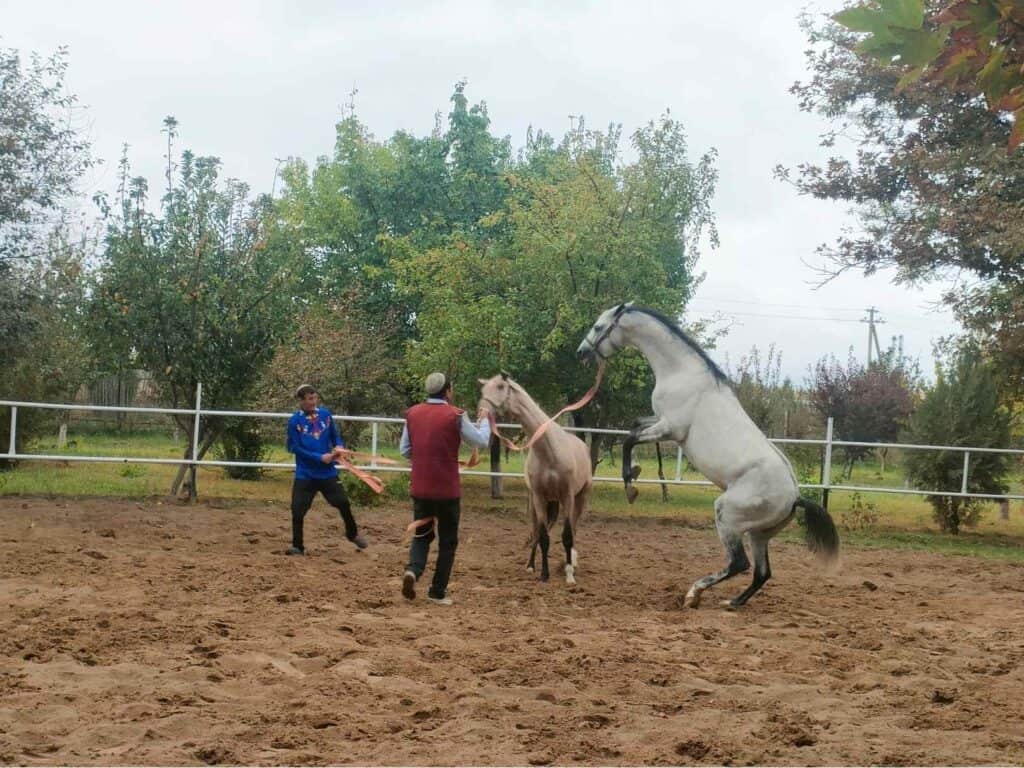
While there are different subspecies of Turkmen horses, most of them are named after the tribes they were traditionally associated with, the most celebrated of the Turkmen horses being the Akhal Teke.
It is one of the oldest horse breeds in the world with famously high endurance. They are usually smaller and thin. Some have a golden color, which is why they are also called golden horses. In 1956, Queen Elizabeth received a horse from Nikita Khrushchev. The horsemen thought the Russians had painted it with gold, but the more it was washed, the brighter the gold became. It almost died out under Stalin’s rule; the Soviet regime banned private horse breeding and demanded that the horses be slaughtered for meat. There are only 1,250 Akhal Teke left in the entire Soviet Union.
In 1935, a group of riders rode 4,000 km from Ashgabat to Moscow to prove the special ability of horses. They went day and night for 84 days. The Turkmen were then given permission not to be slaughtered. In 1960, an akhal teke horse won in dressage at the Olympics in Rome.
In Turkmenistan, there is also a minister for horse affairs, and every city has a horse racing track. The owner of the winning horse can expect high-value gifts, such as a sports car.
Turkmenistan is one of the least visited countries enveloped in mystery. I hope this travel guide helps you plan your trip to Turkmenistan and gives you a better understanding of Turkmen life, culture, and all you need to know before traveling to Turkmenistan.

